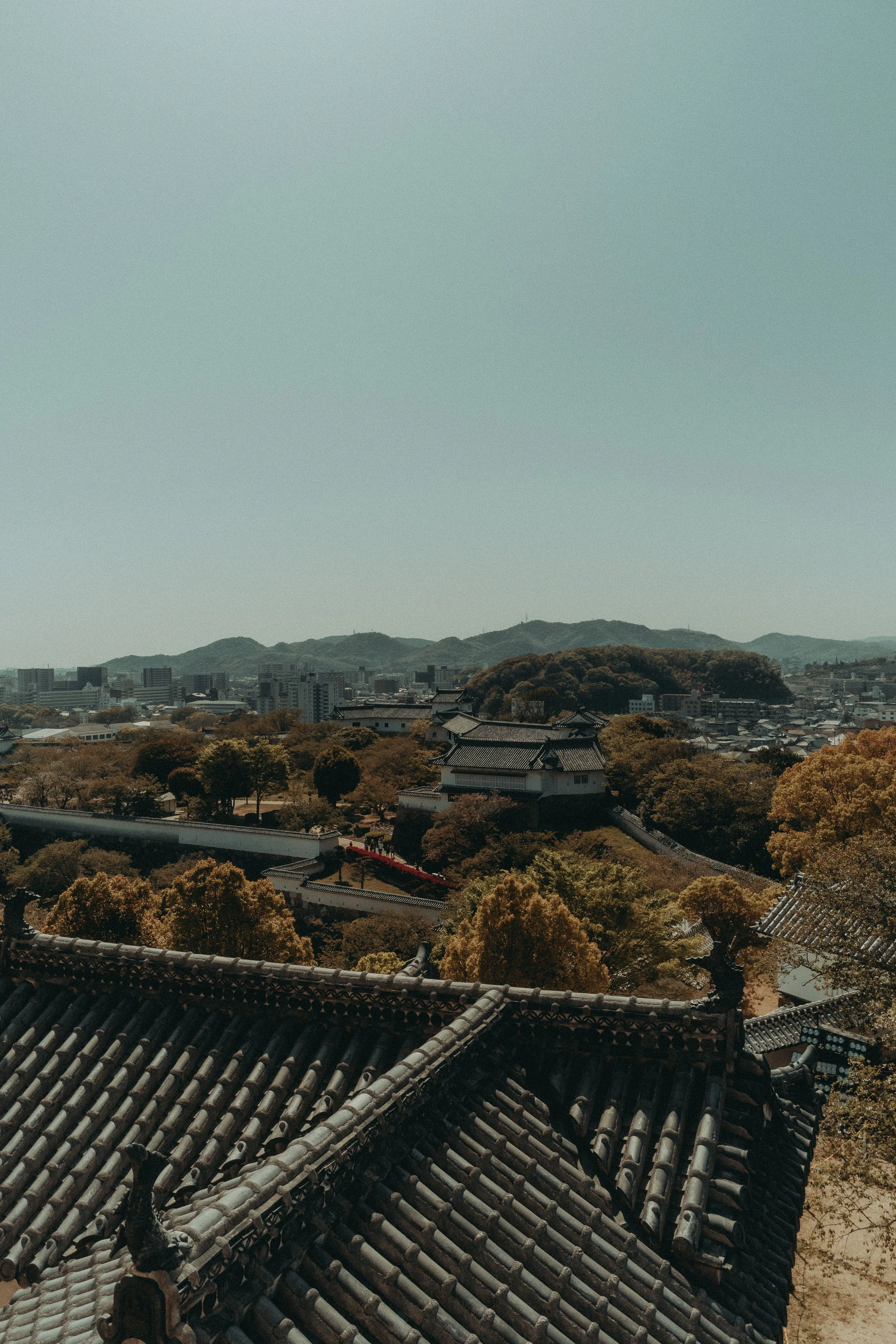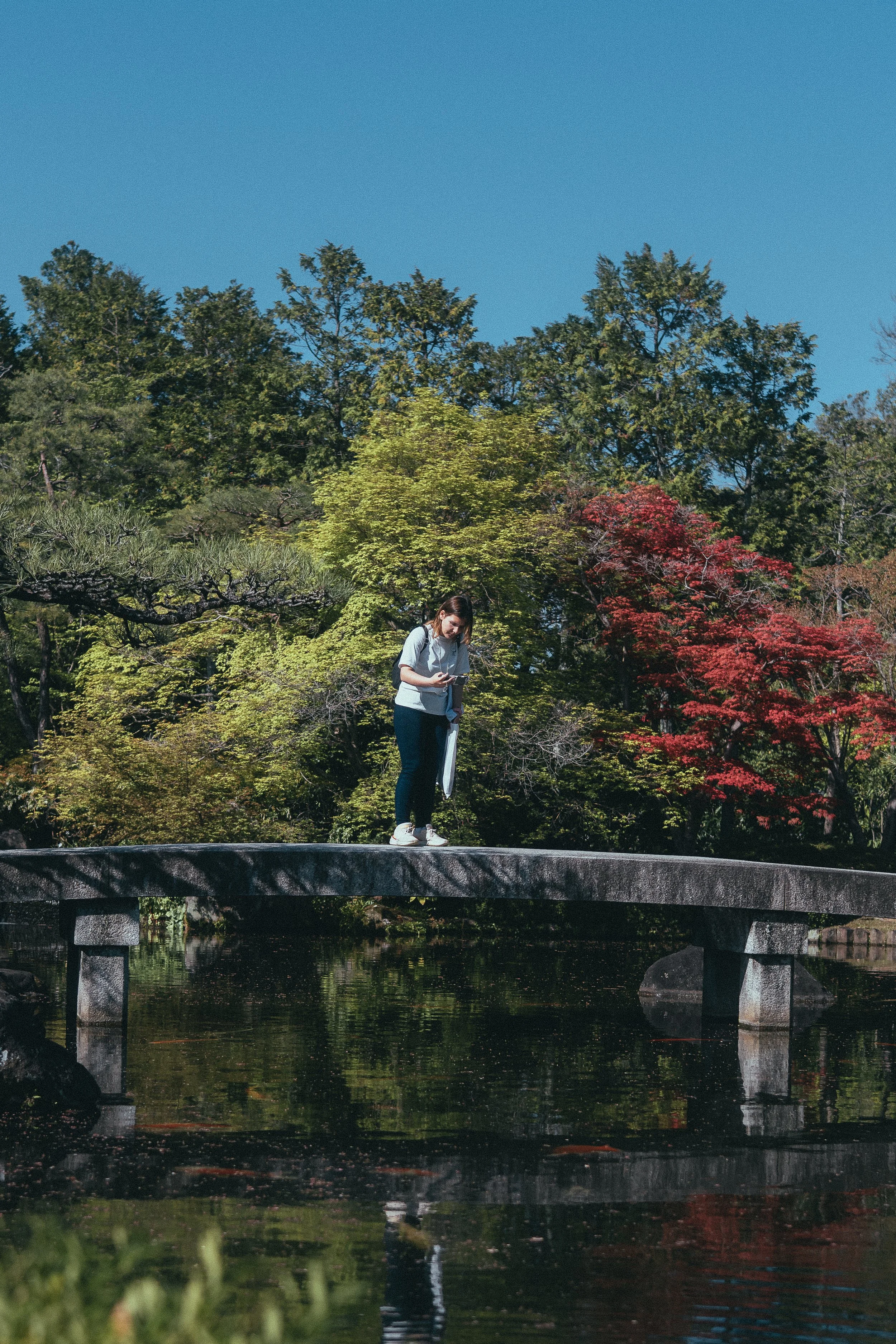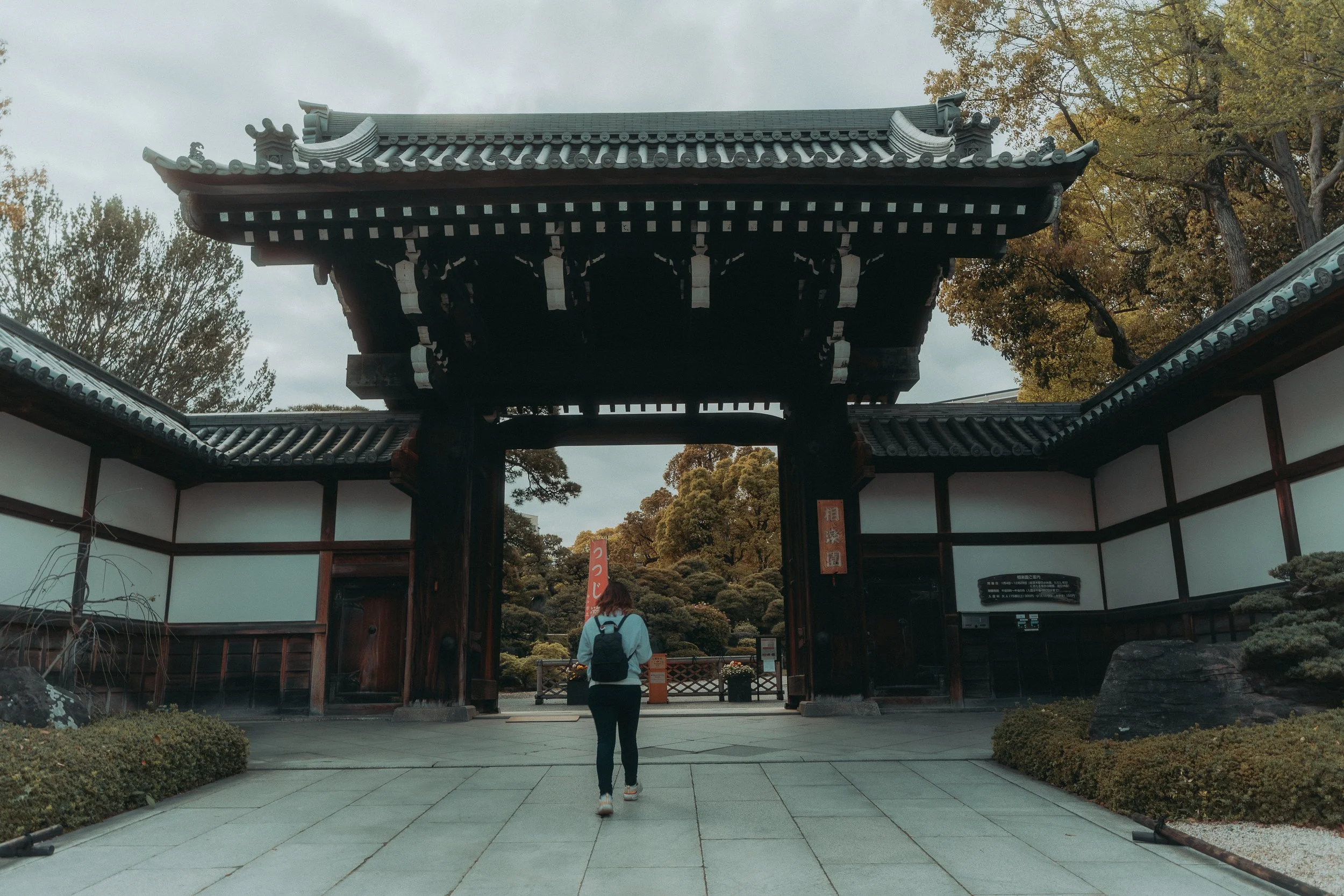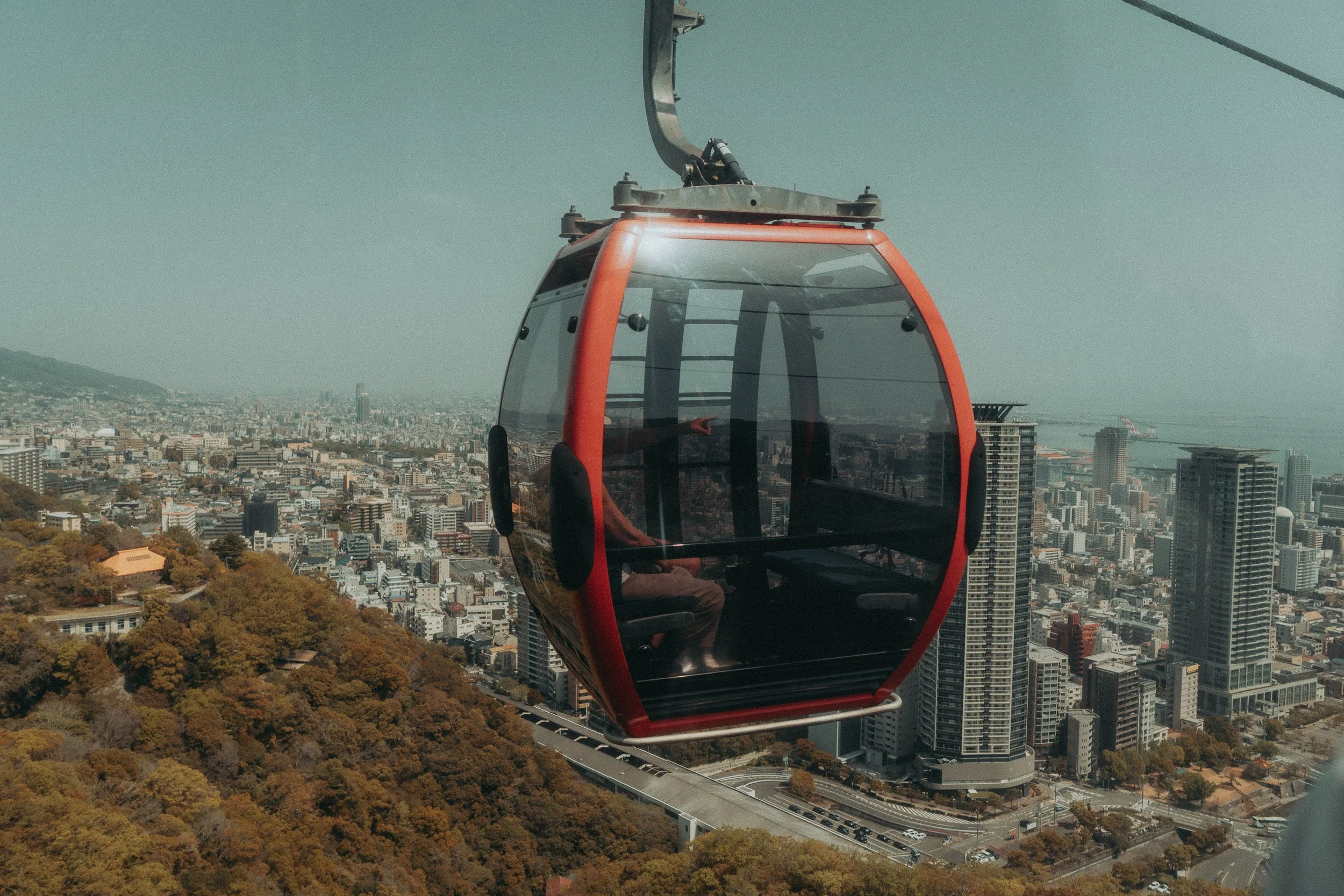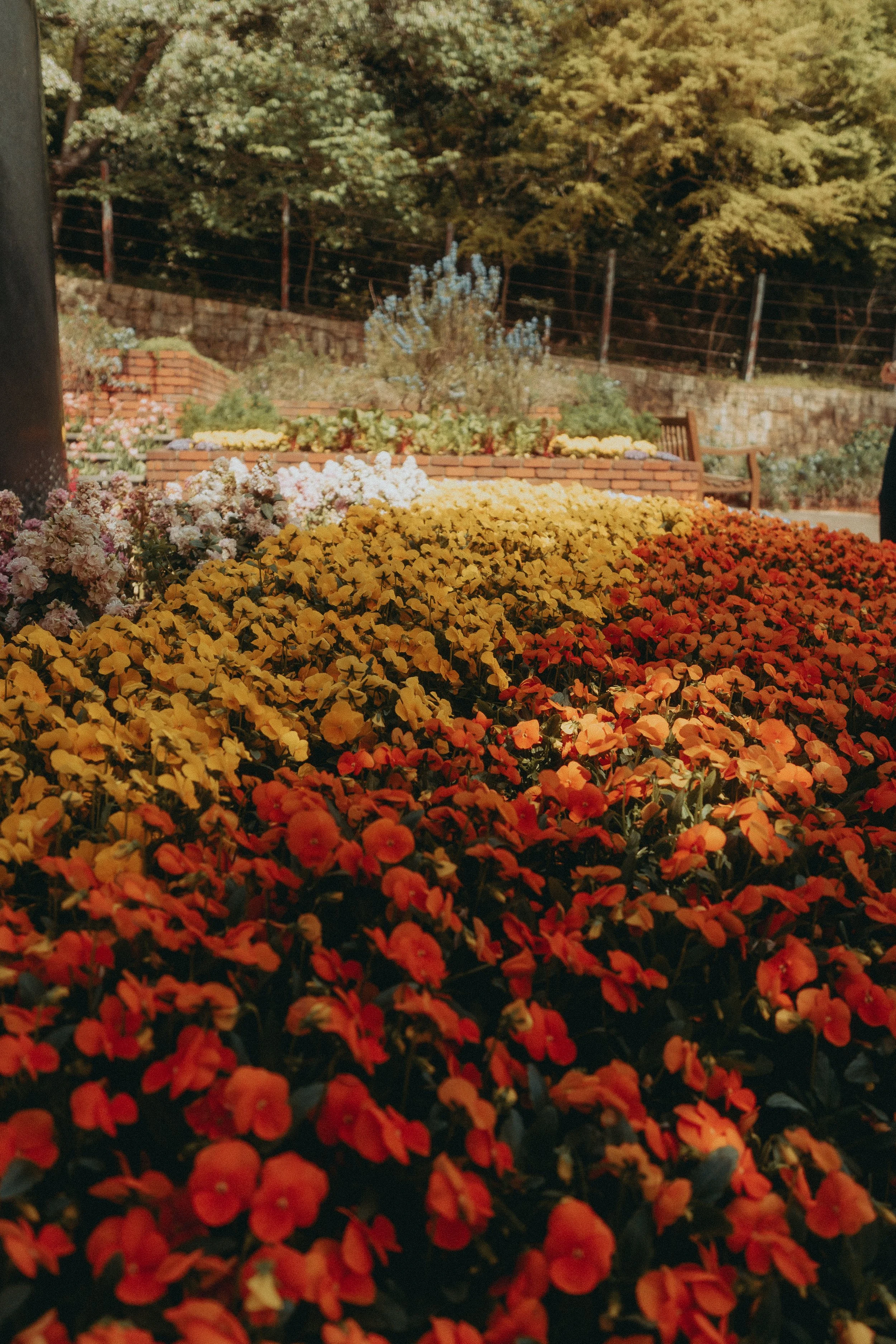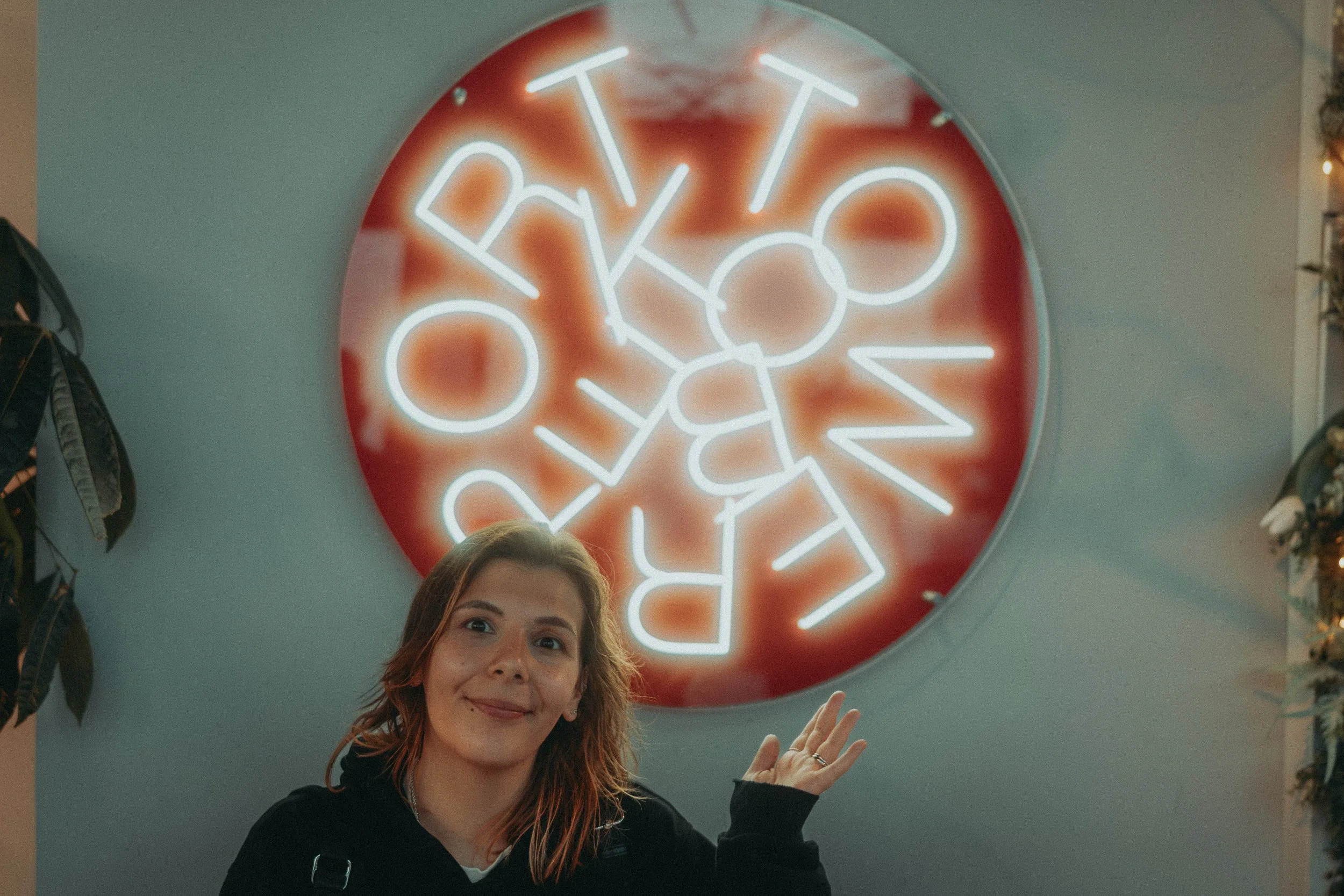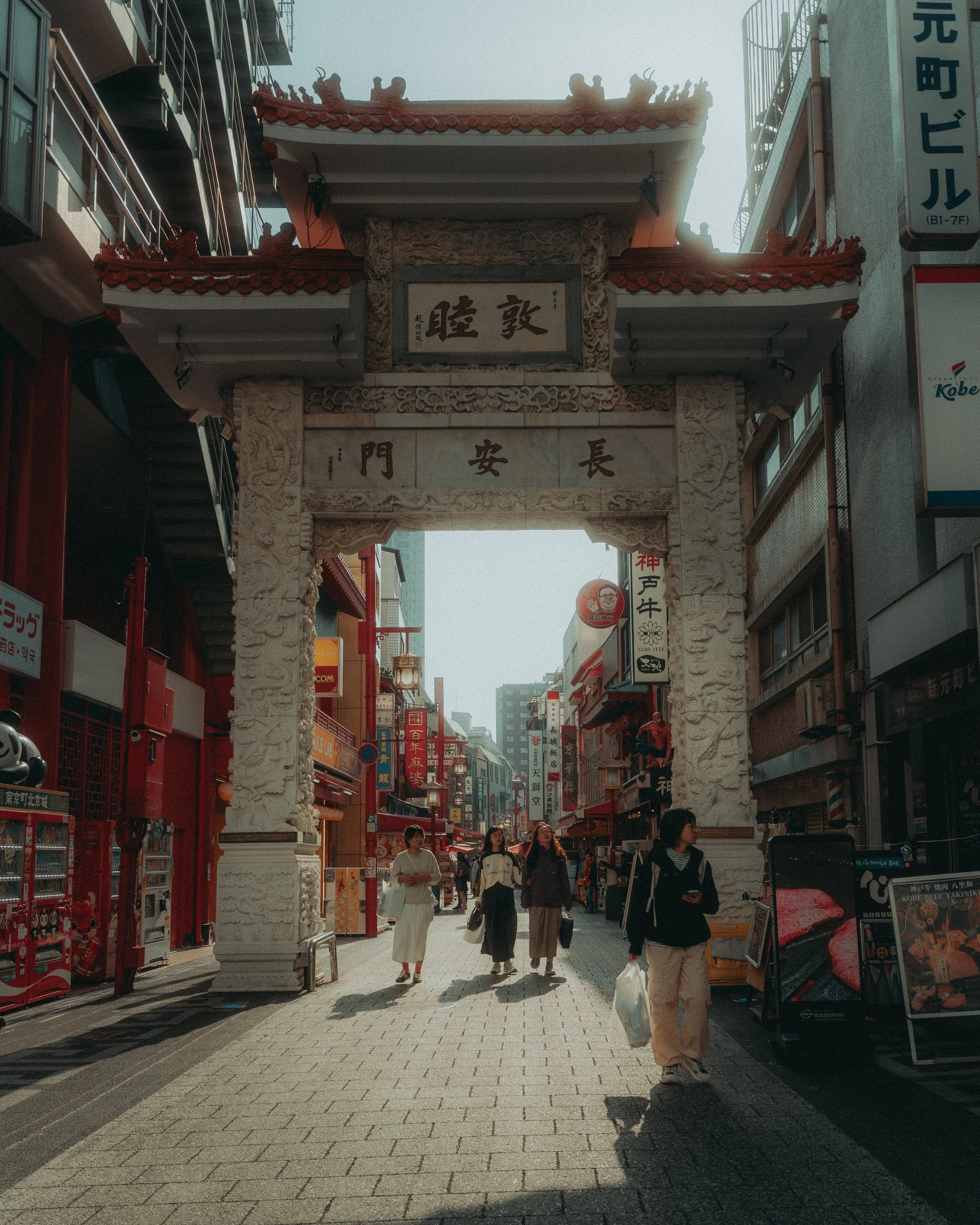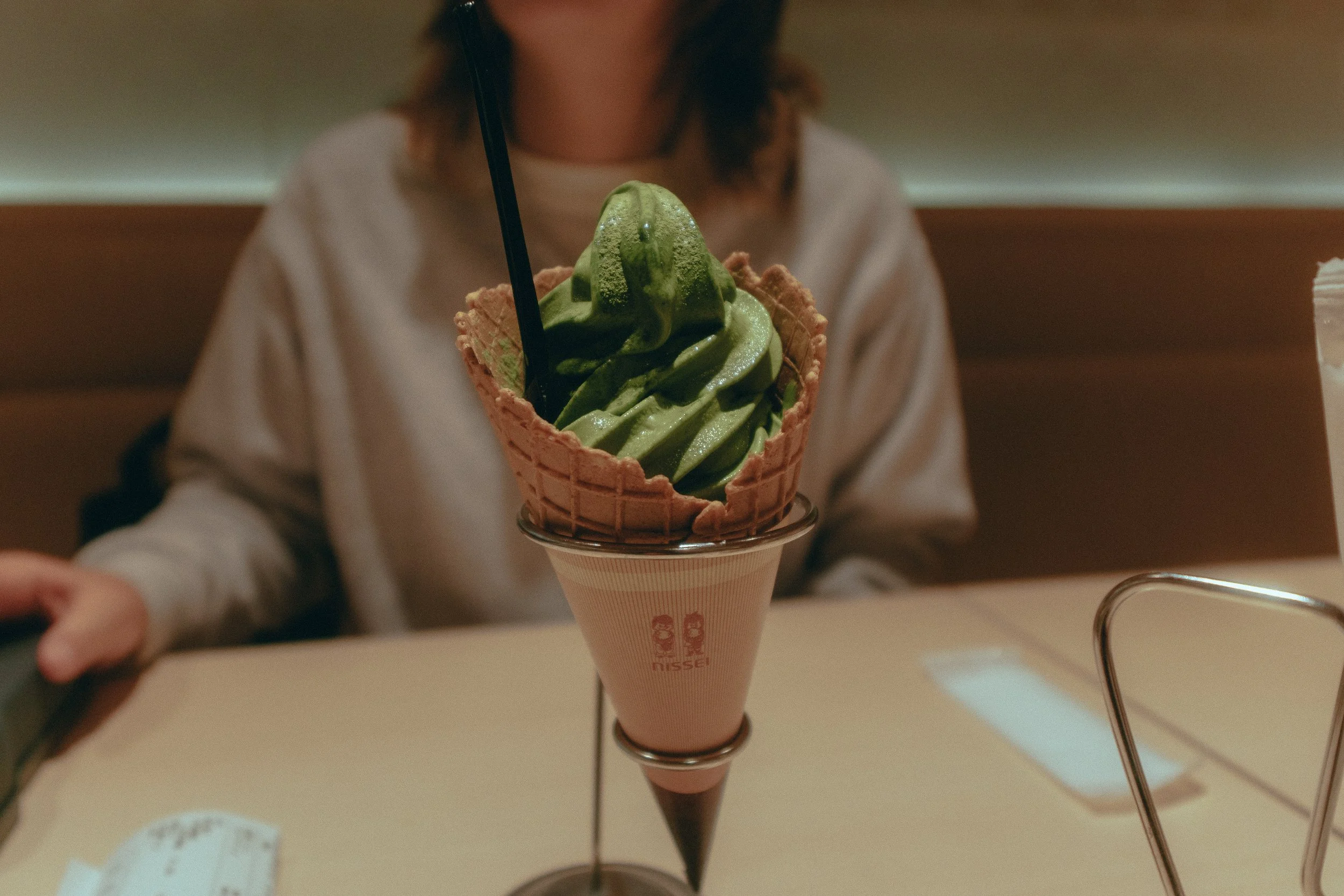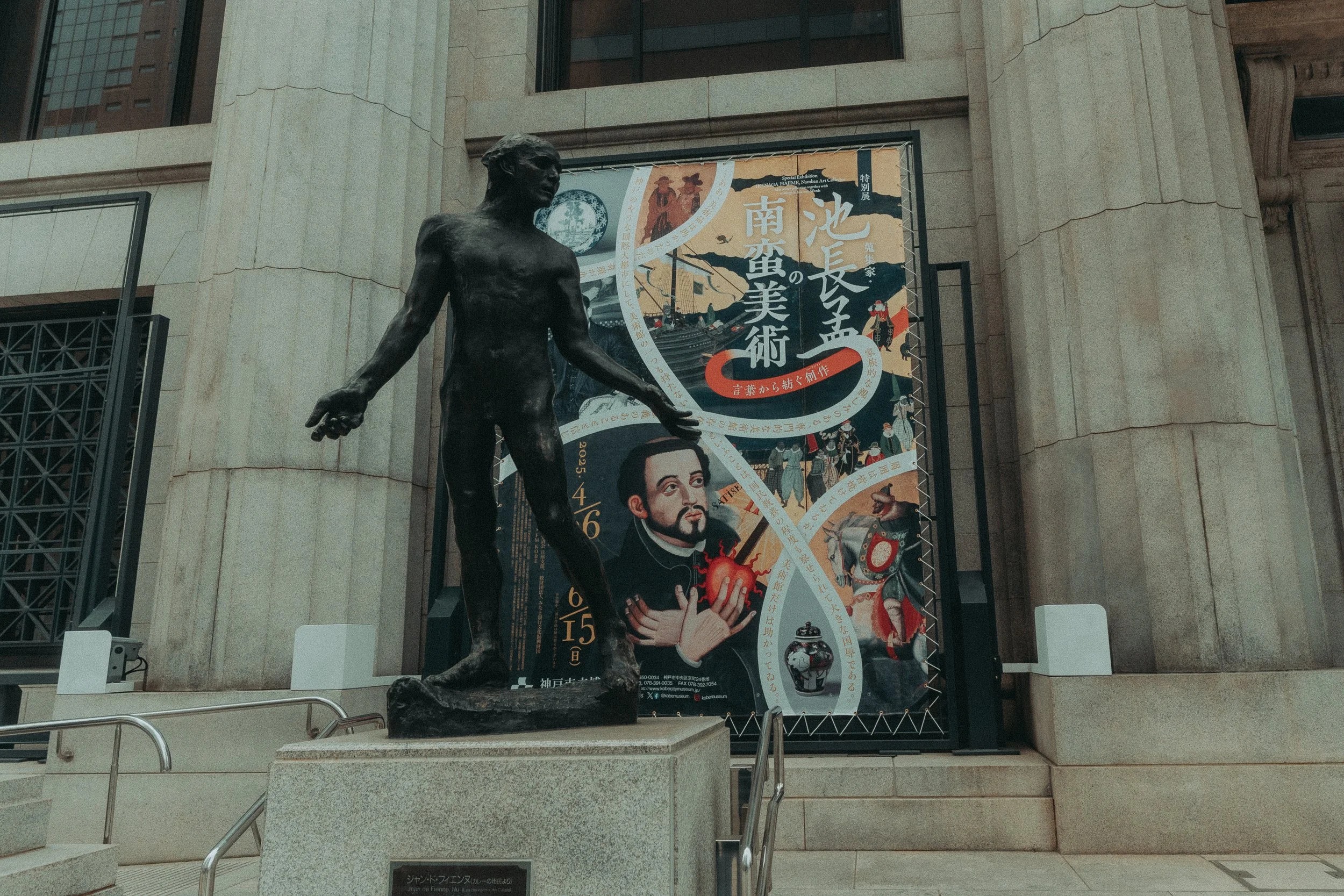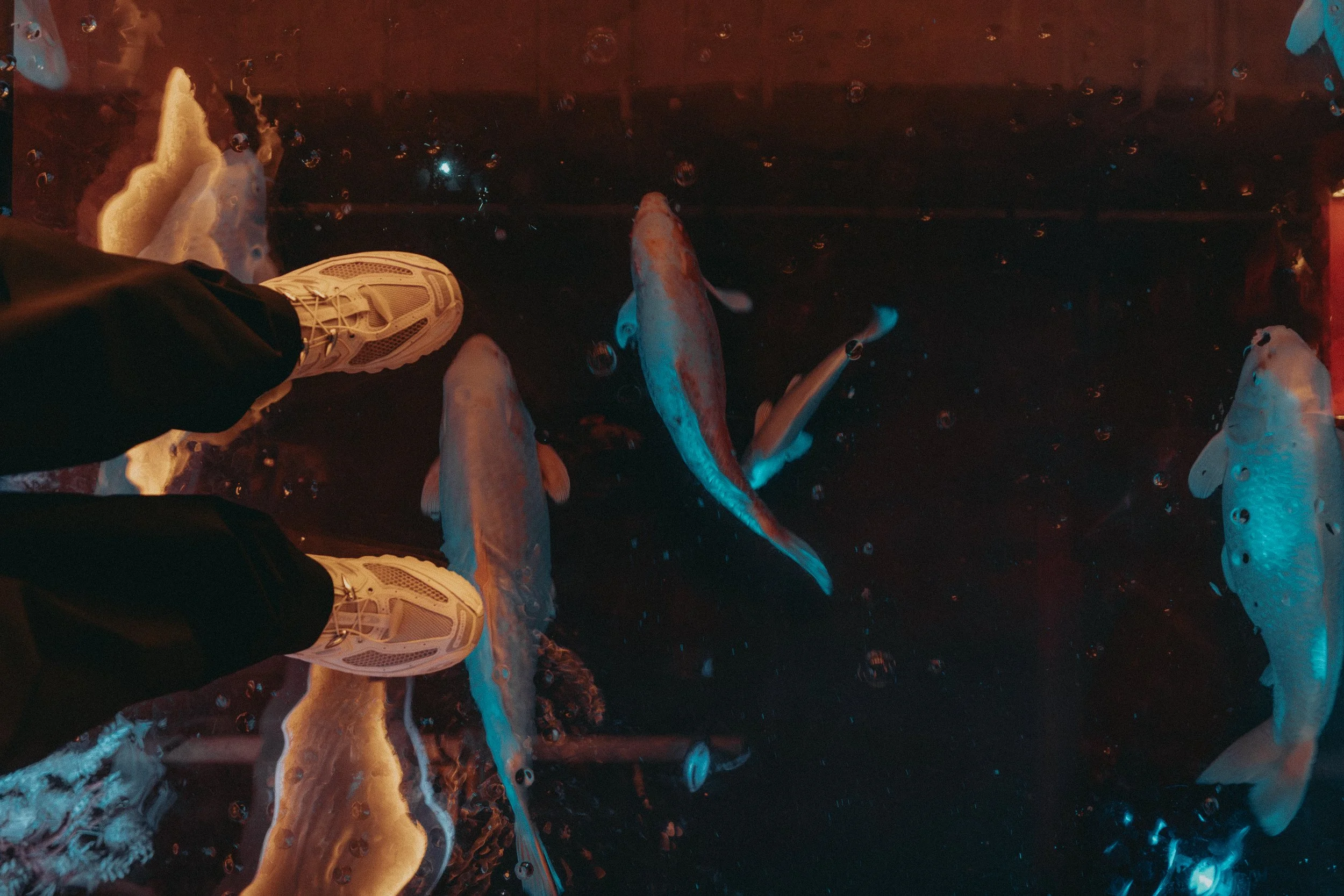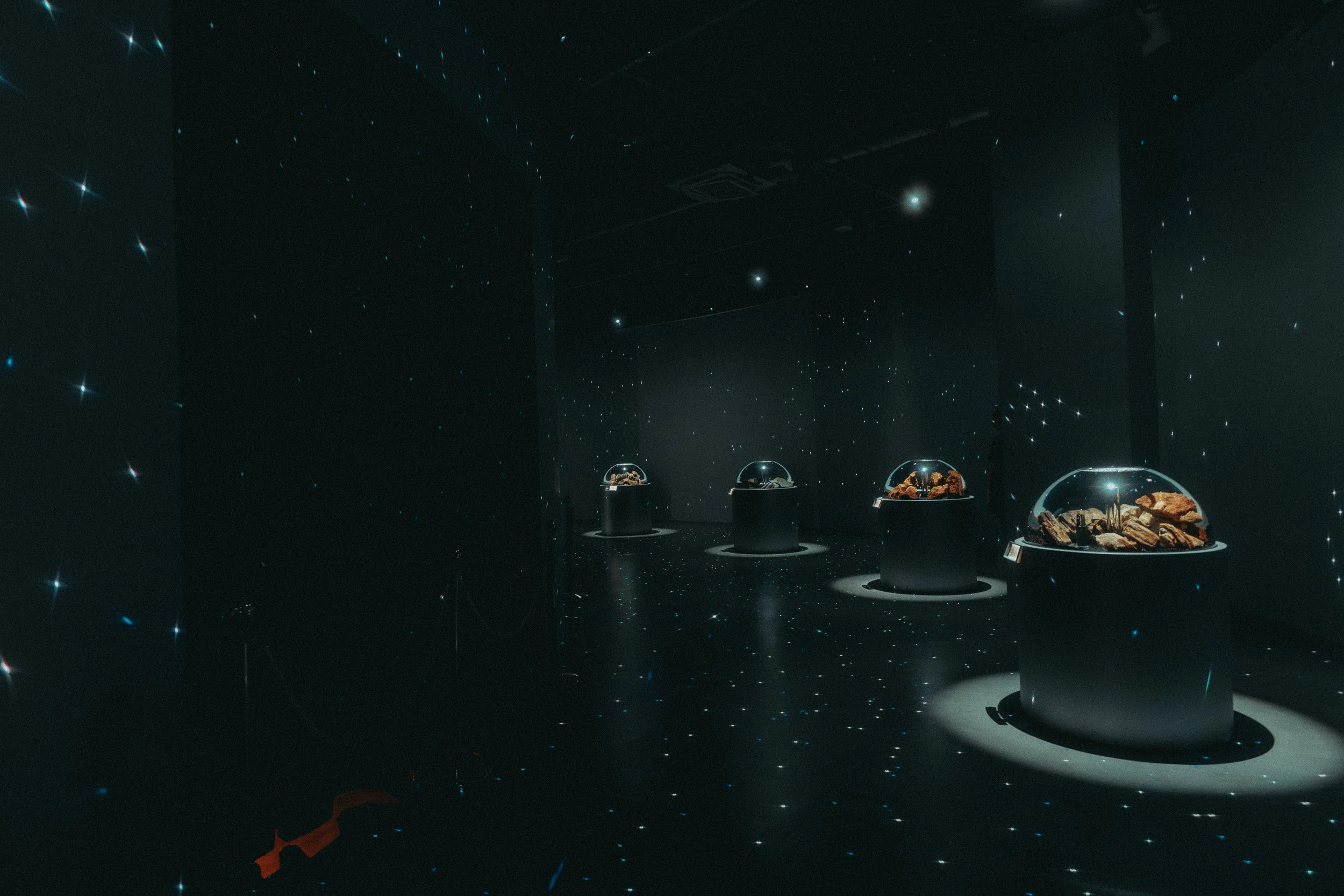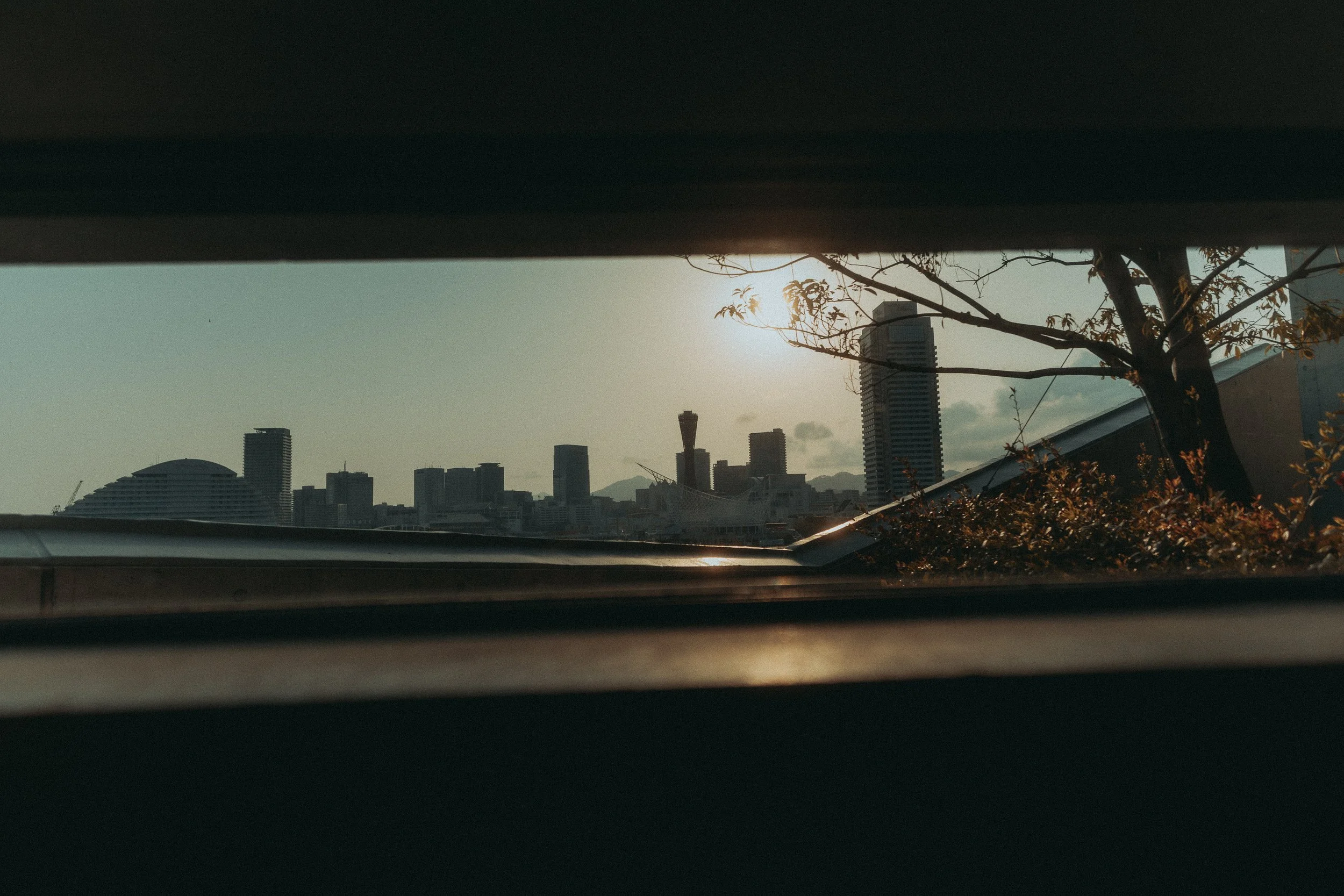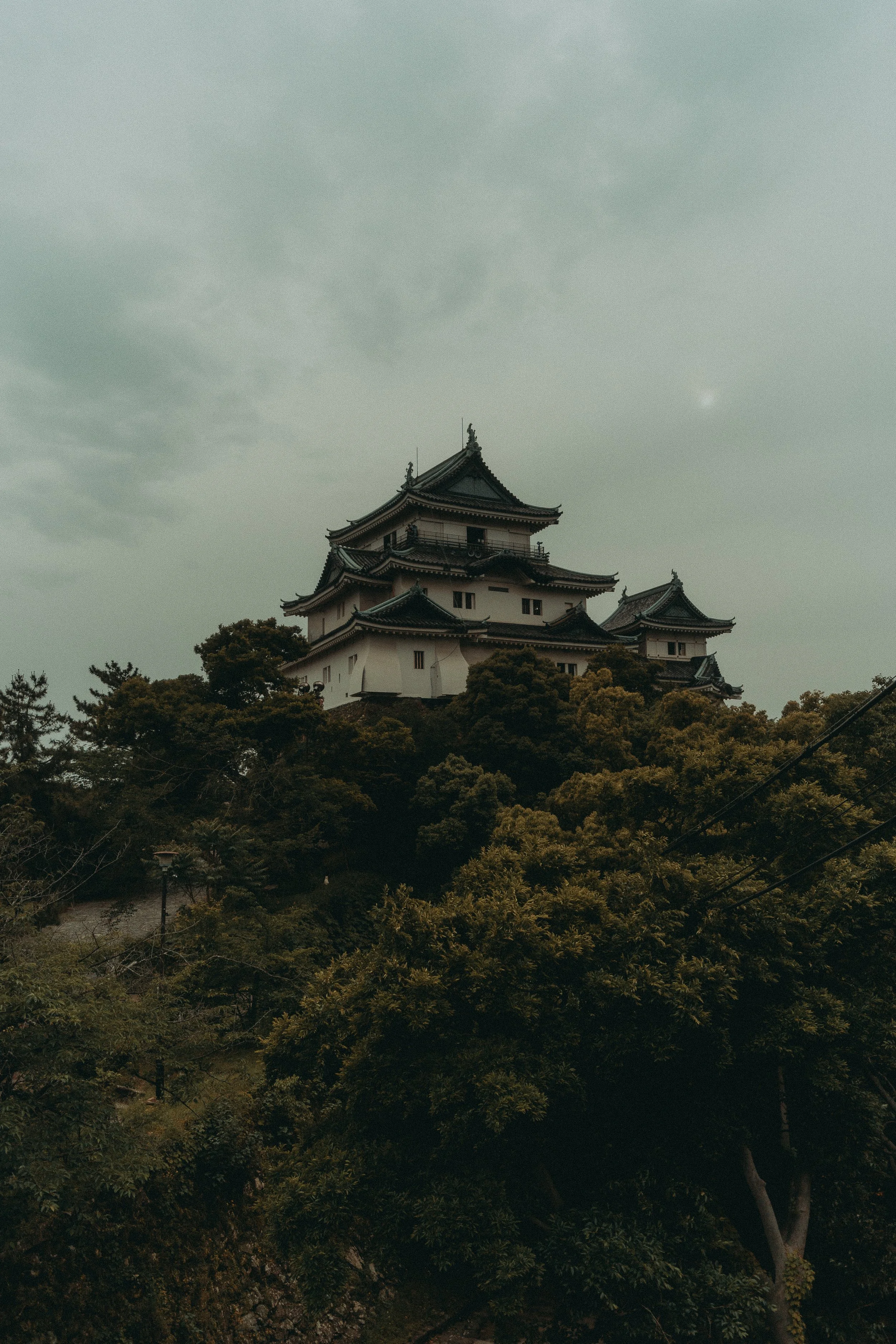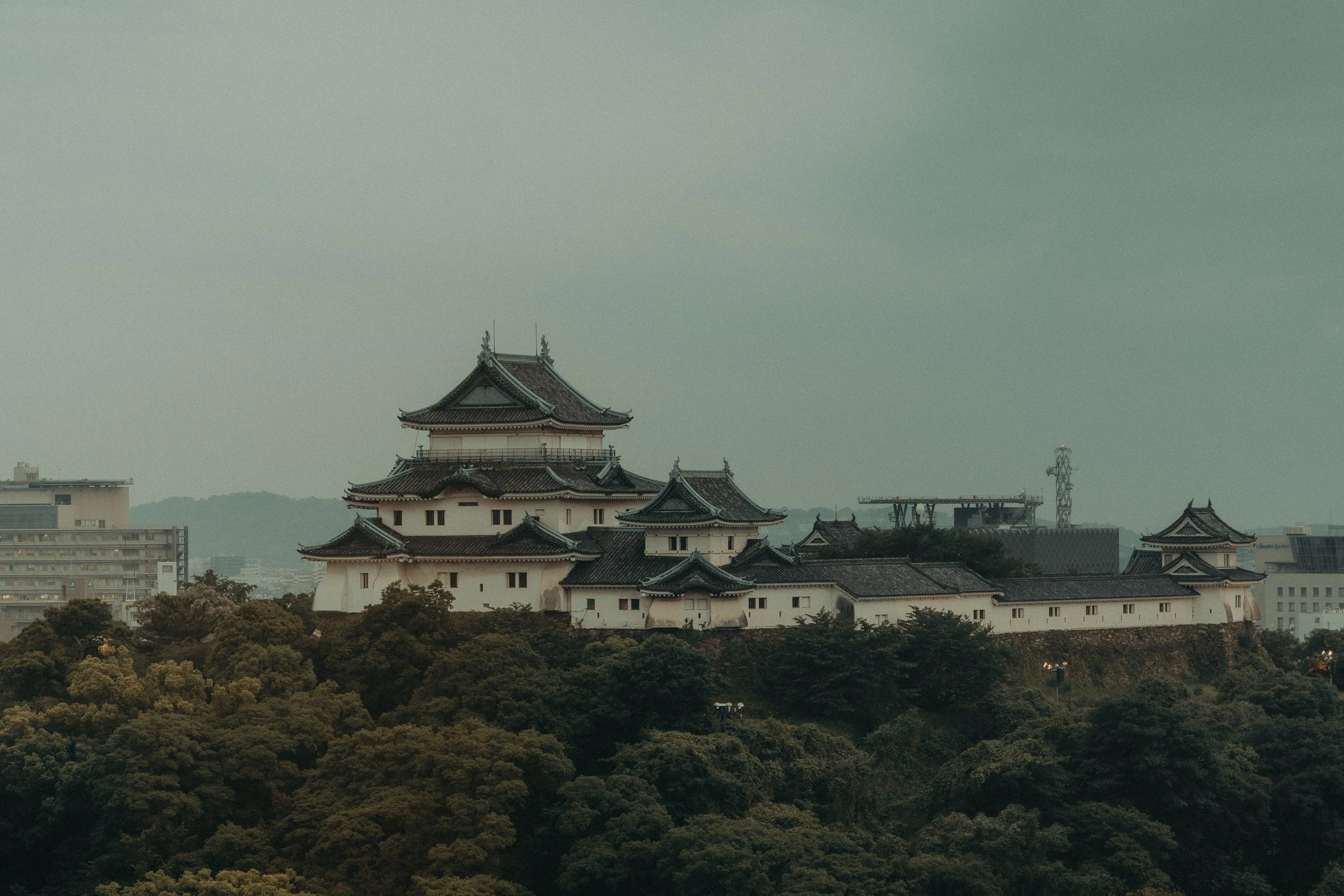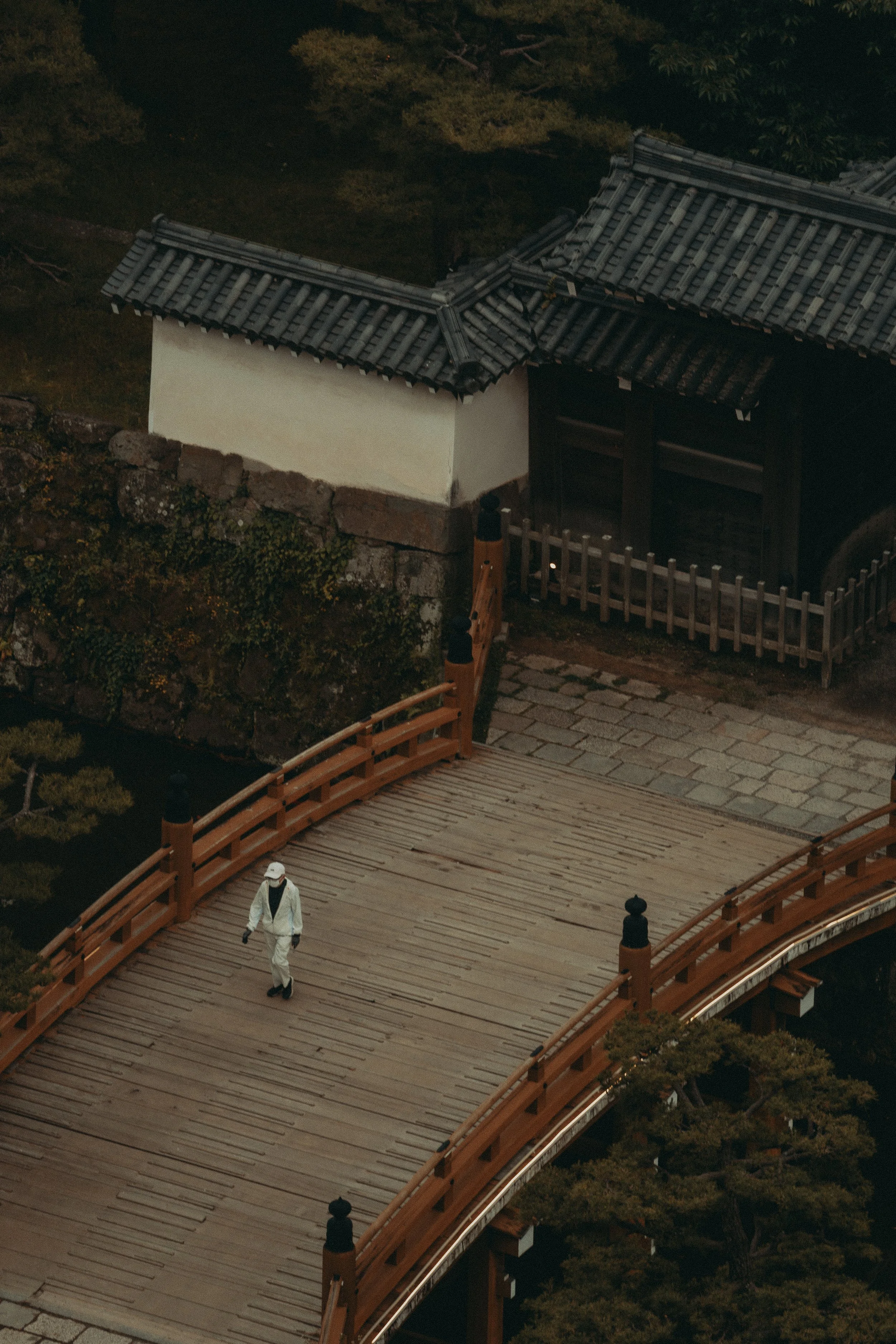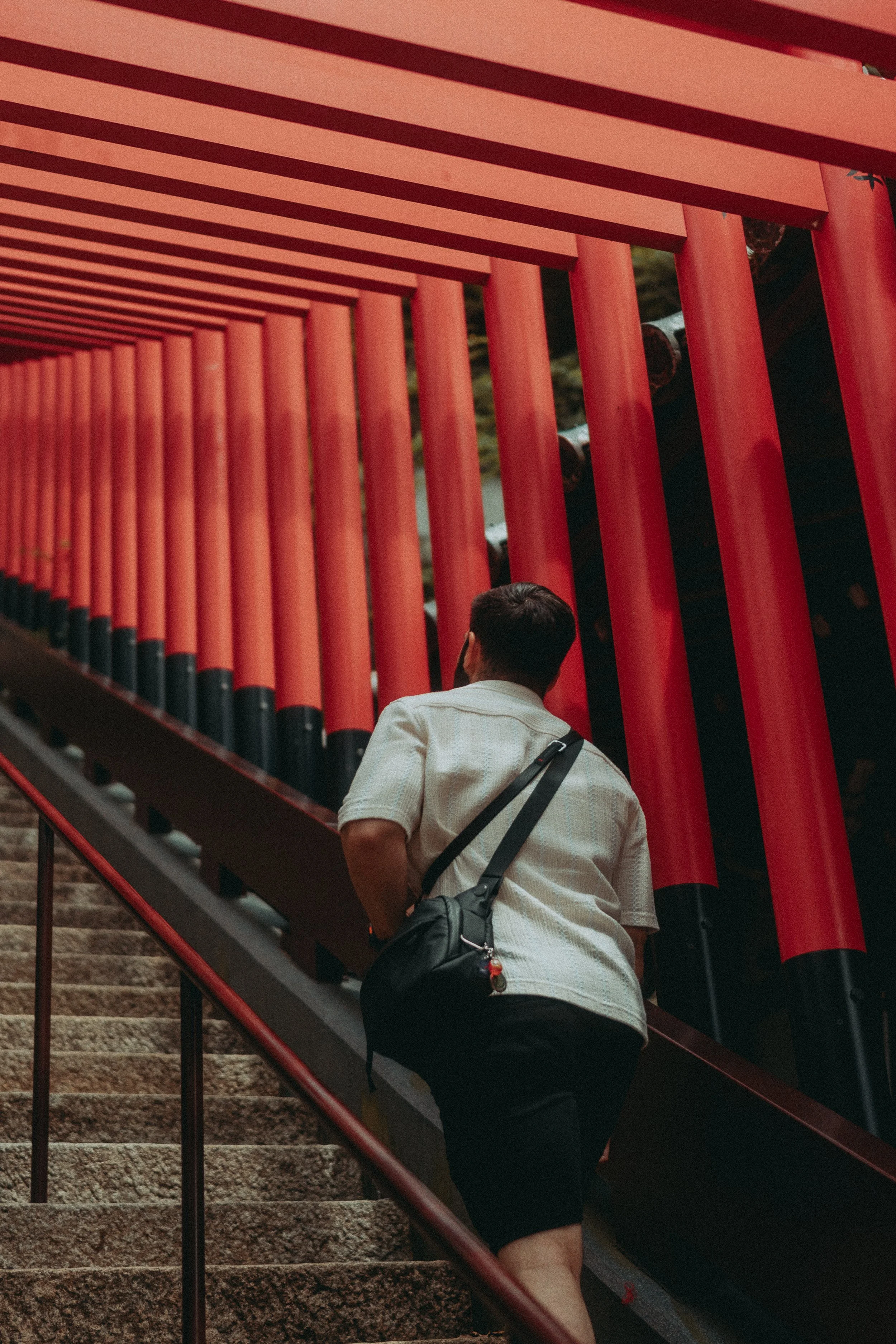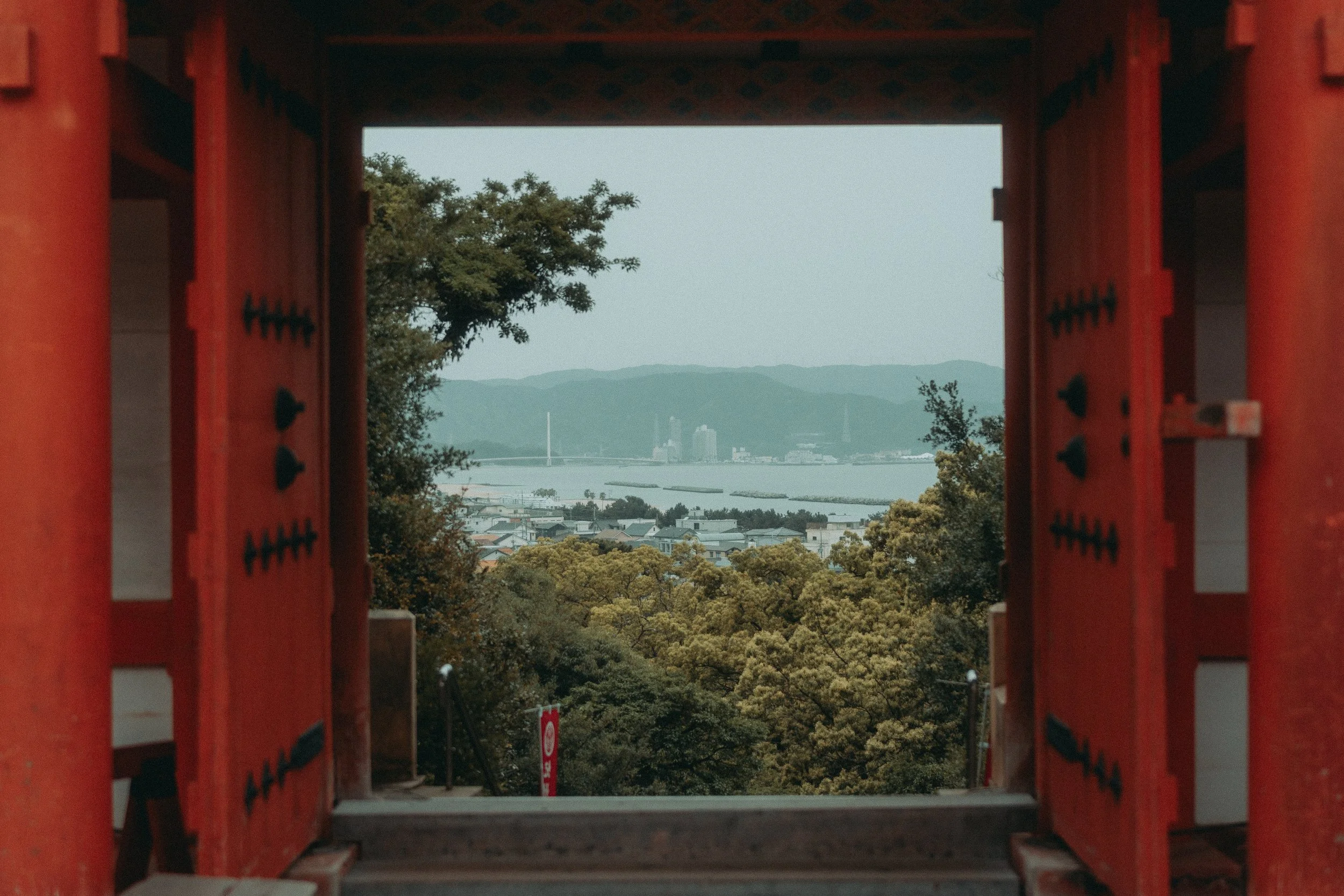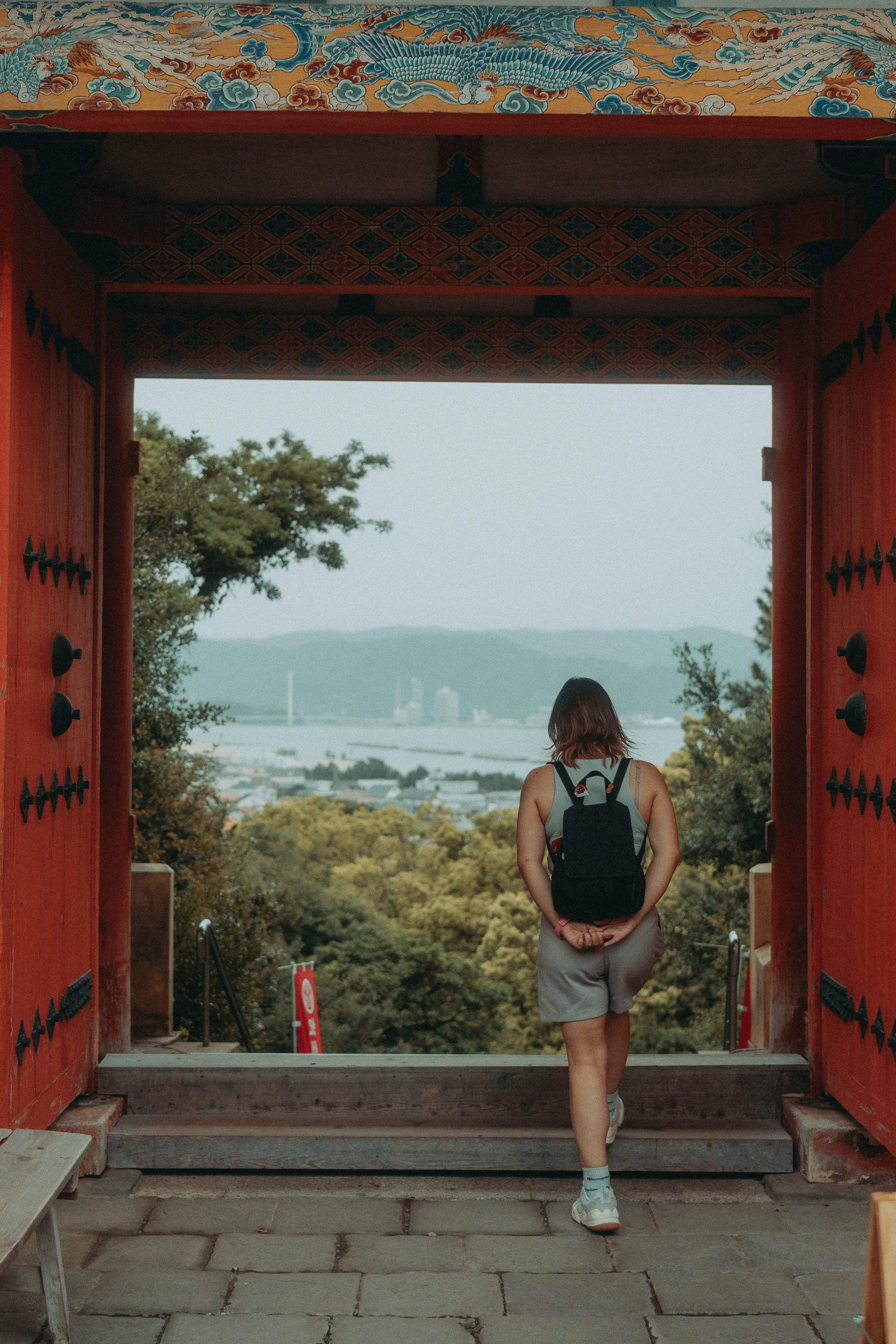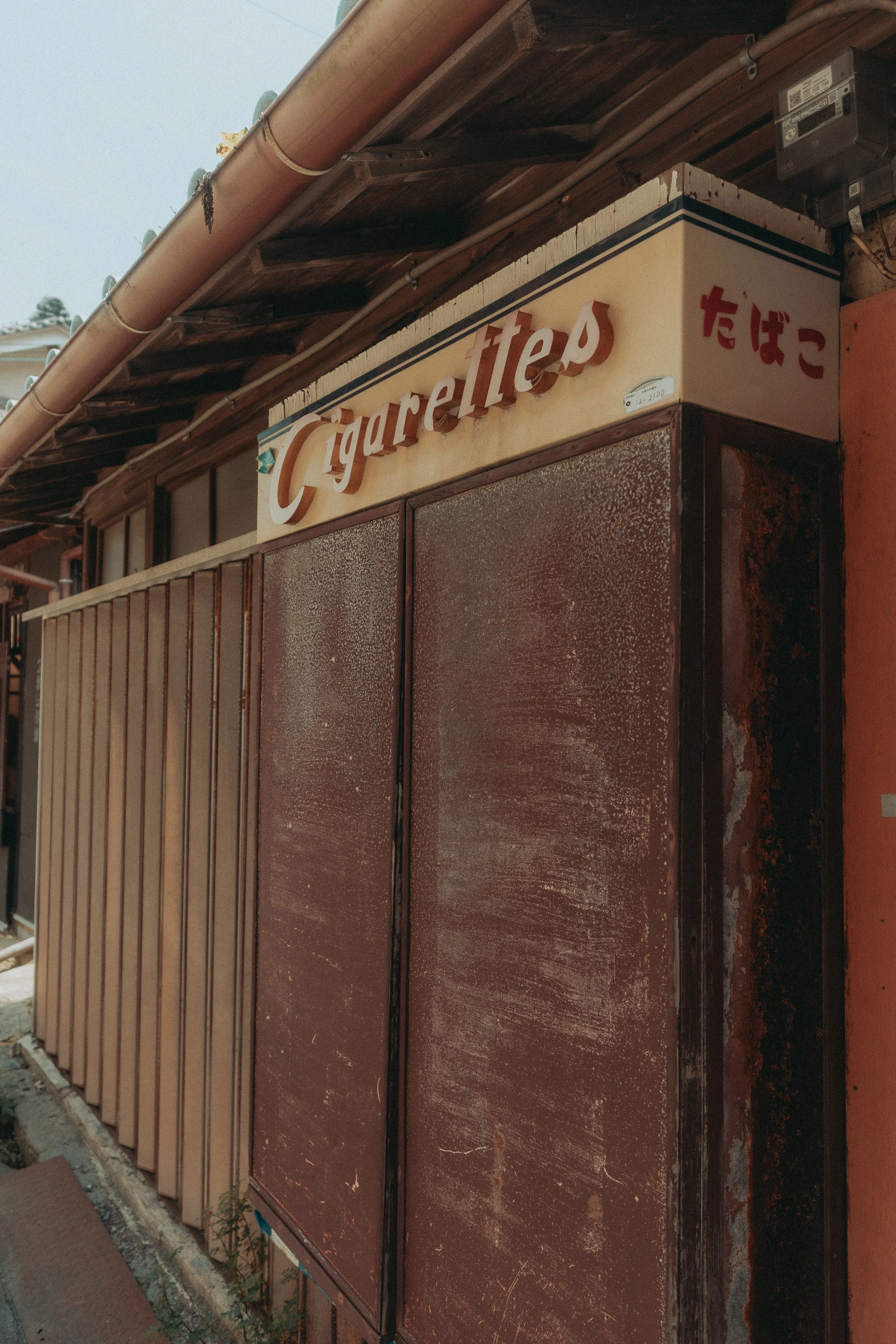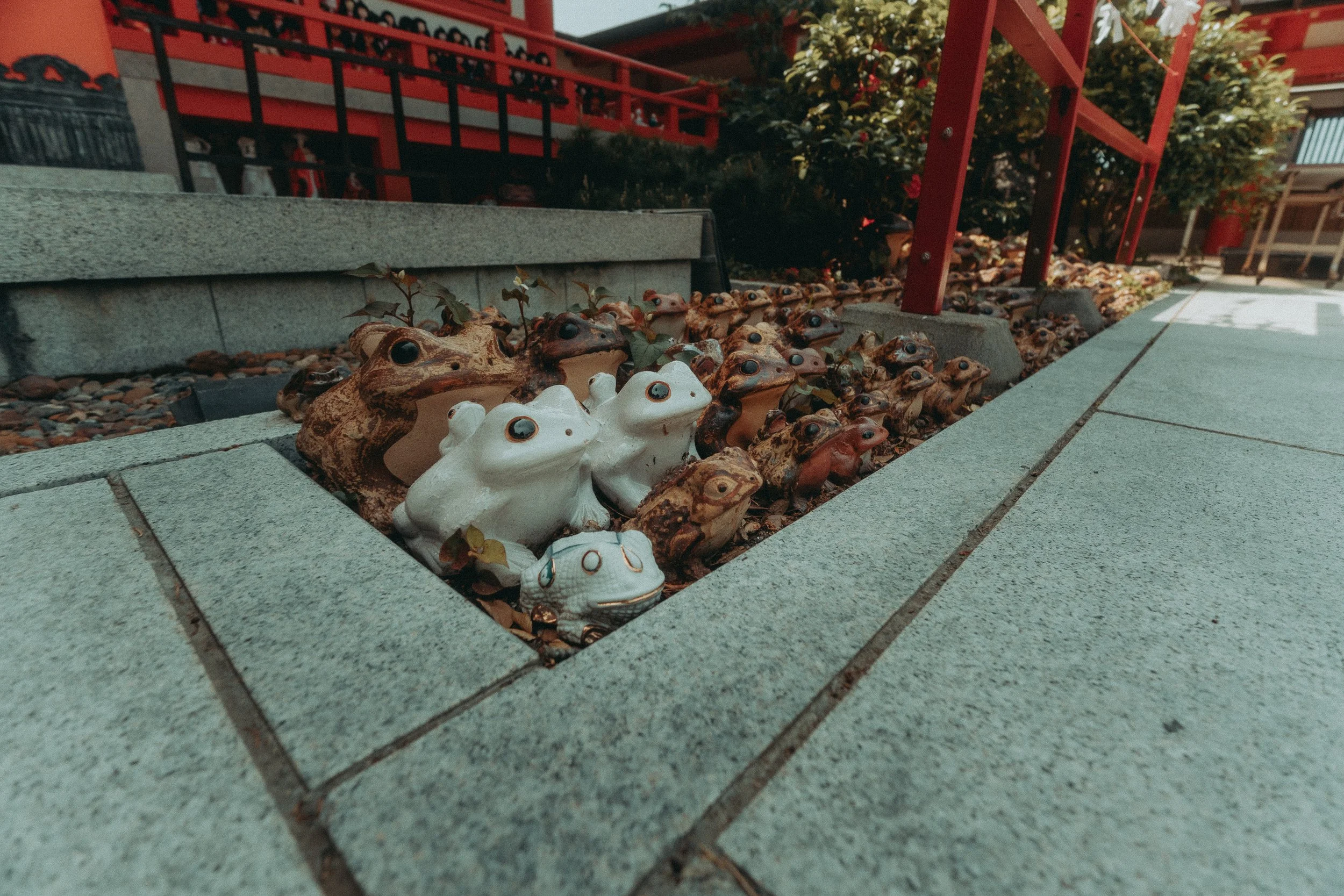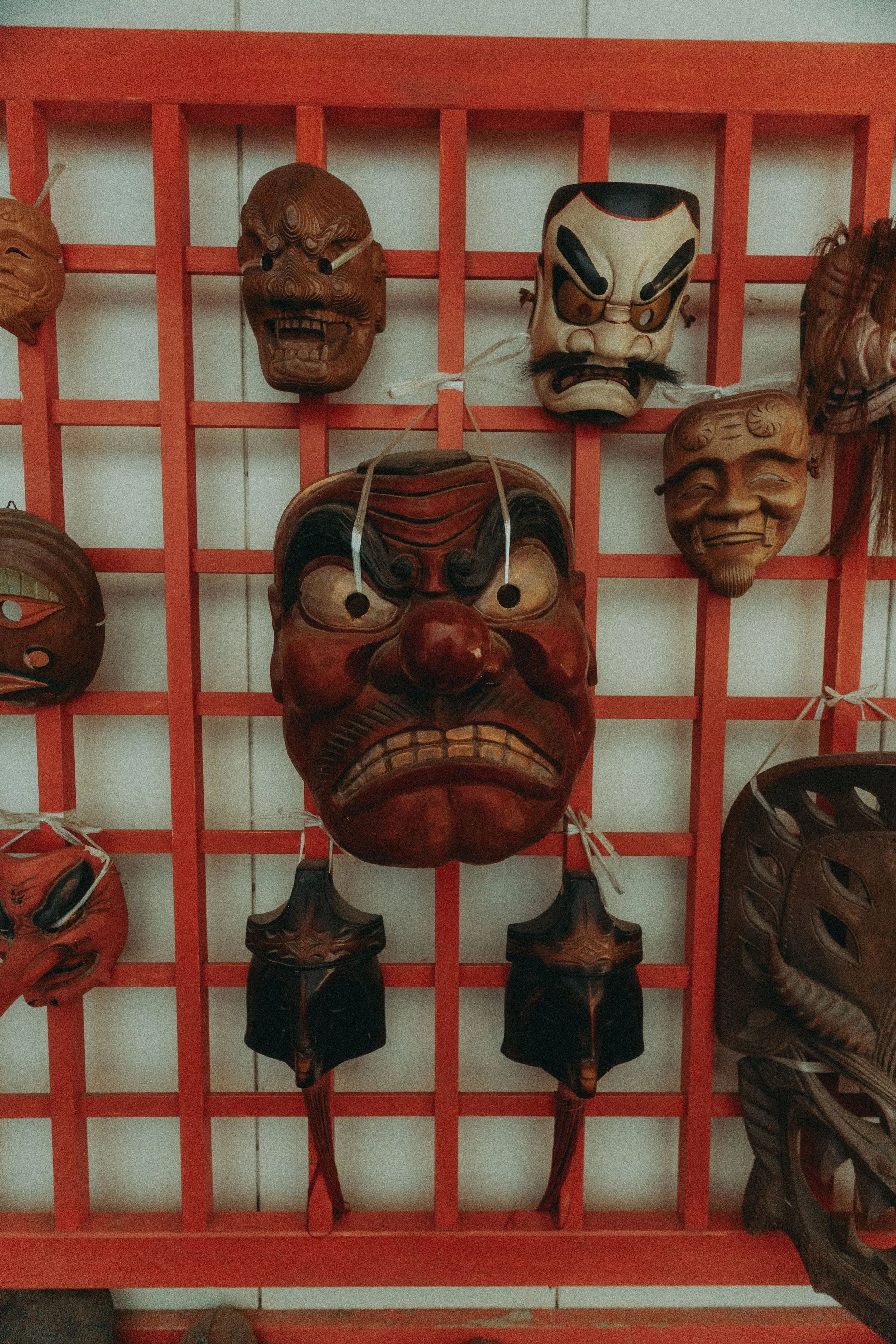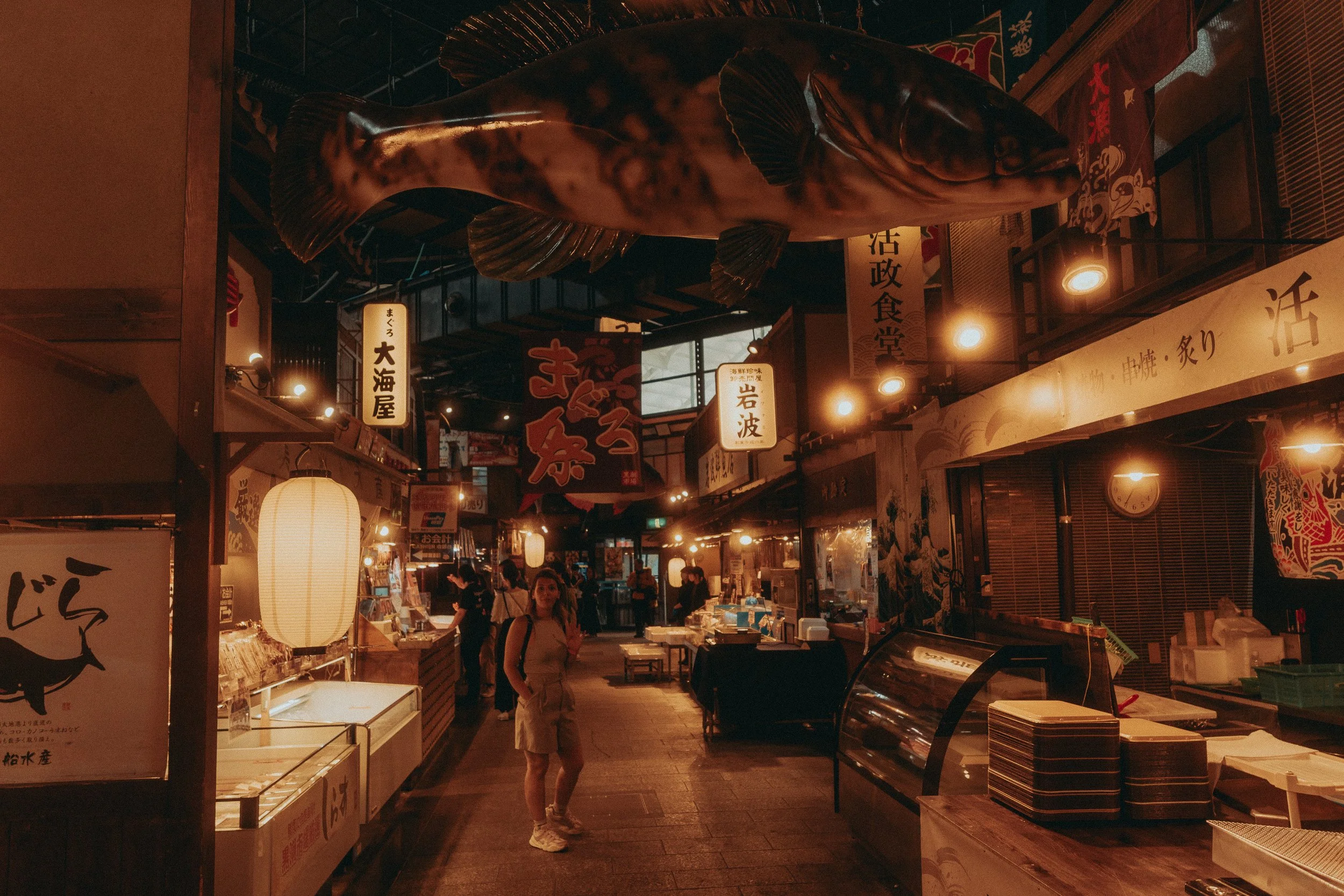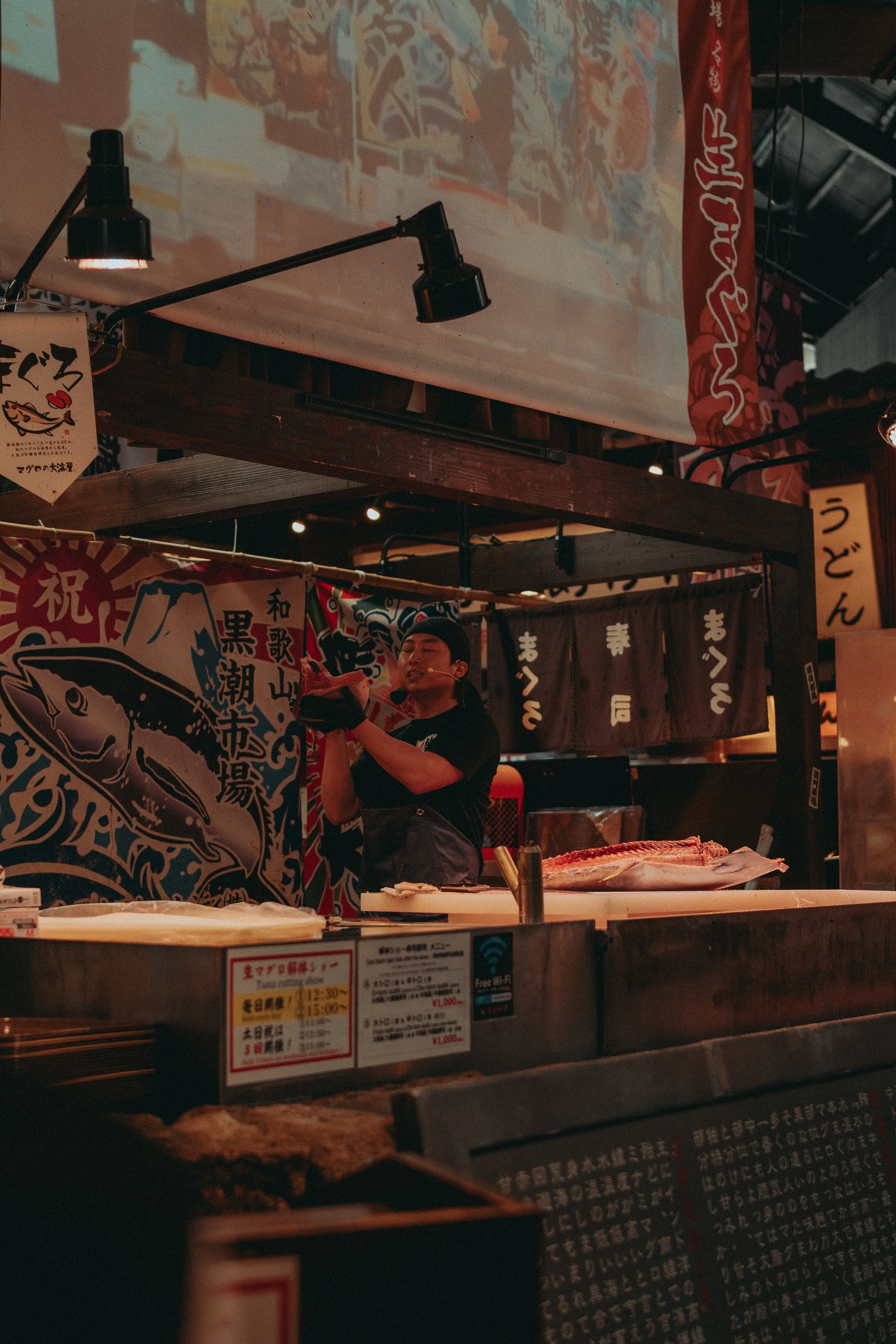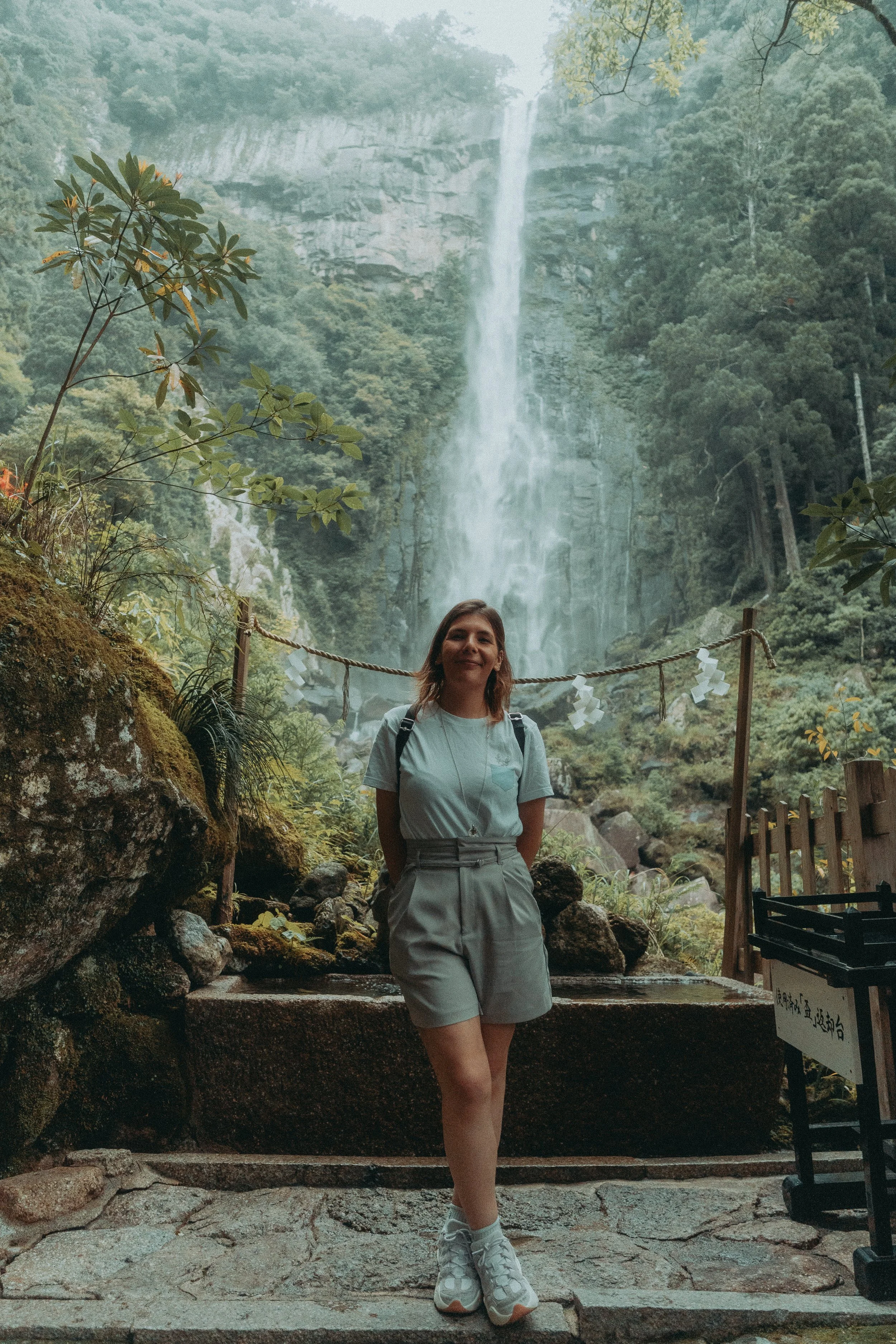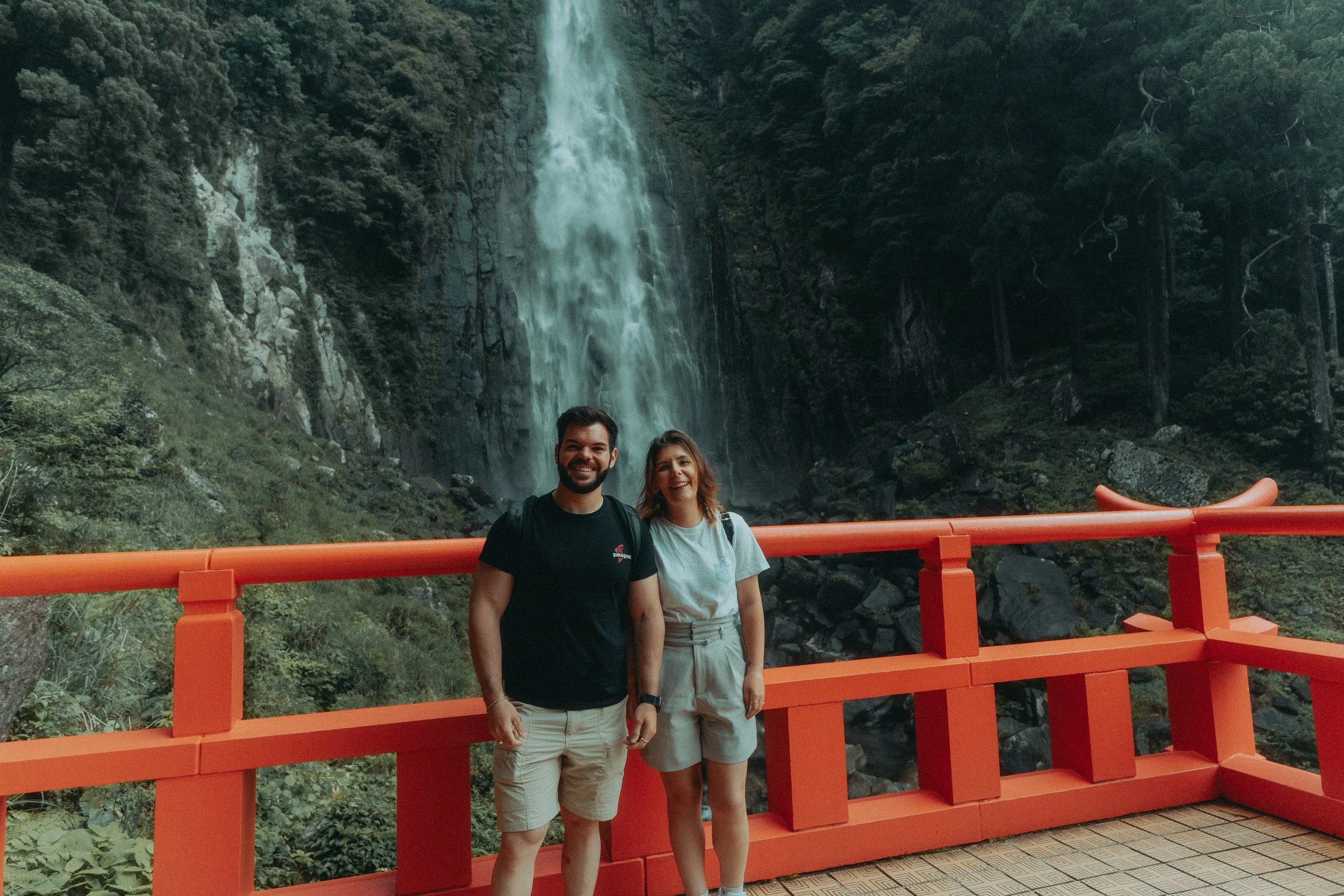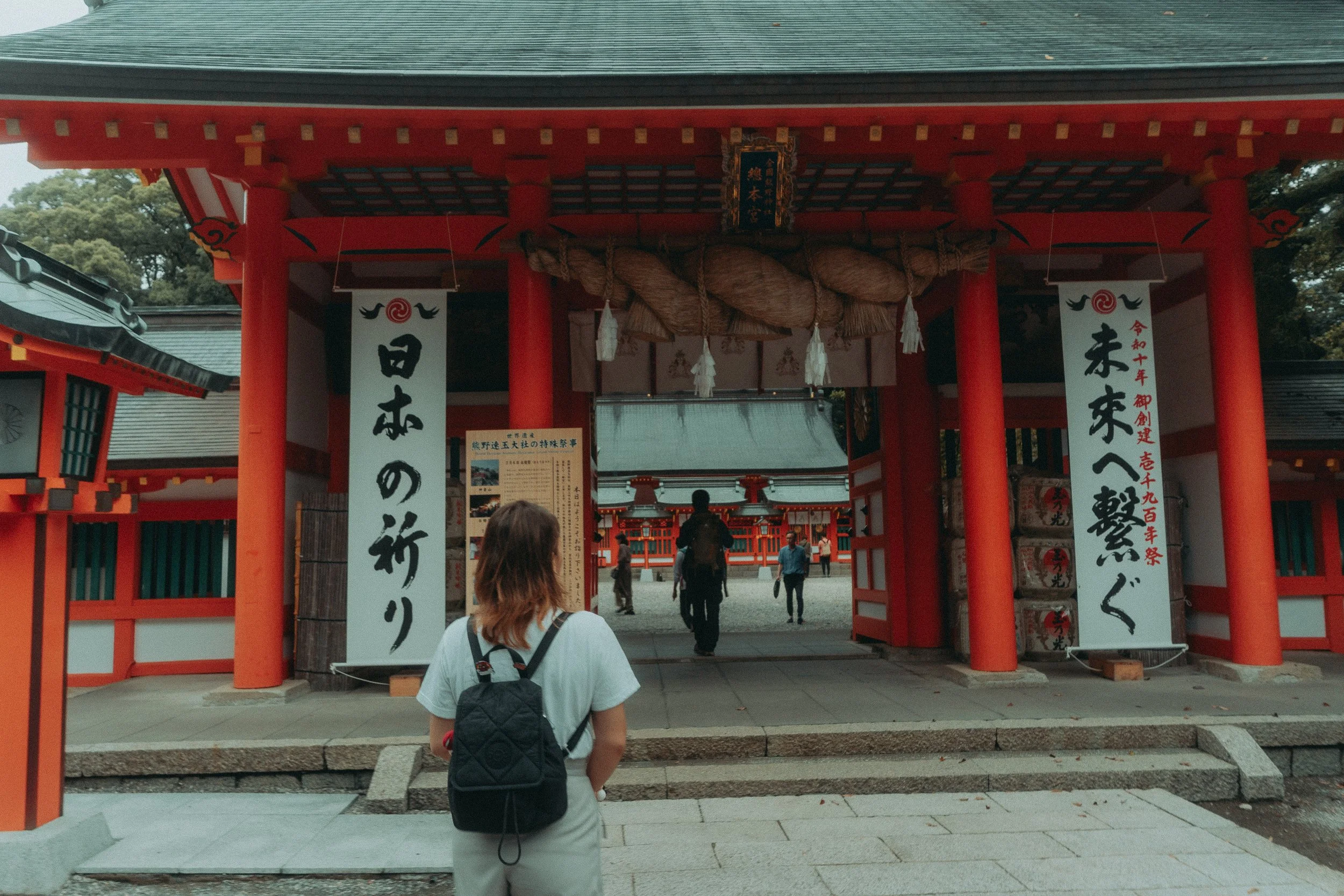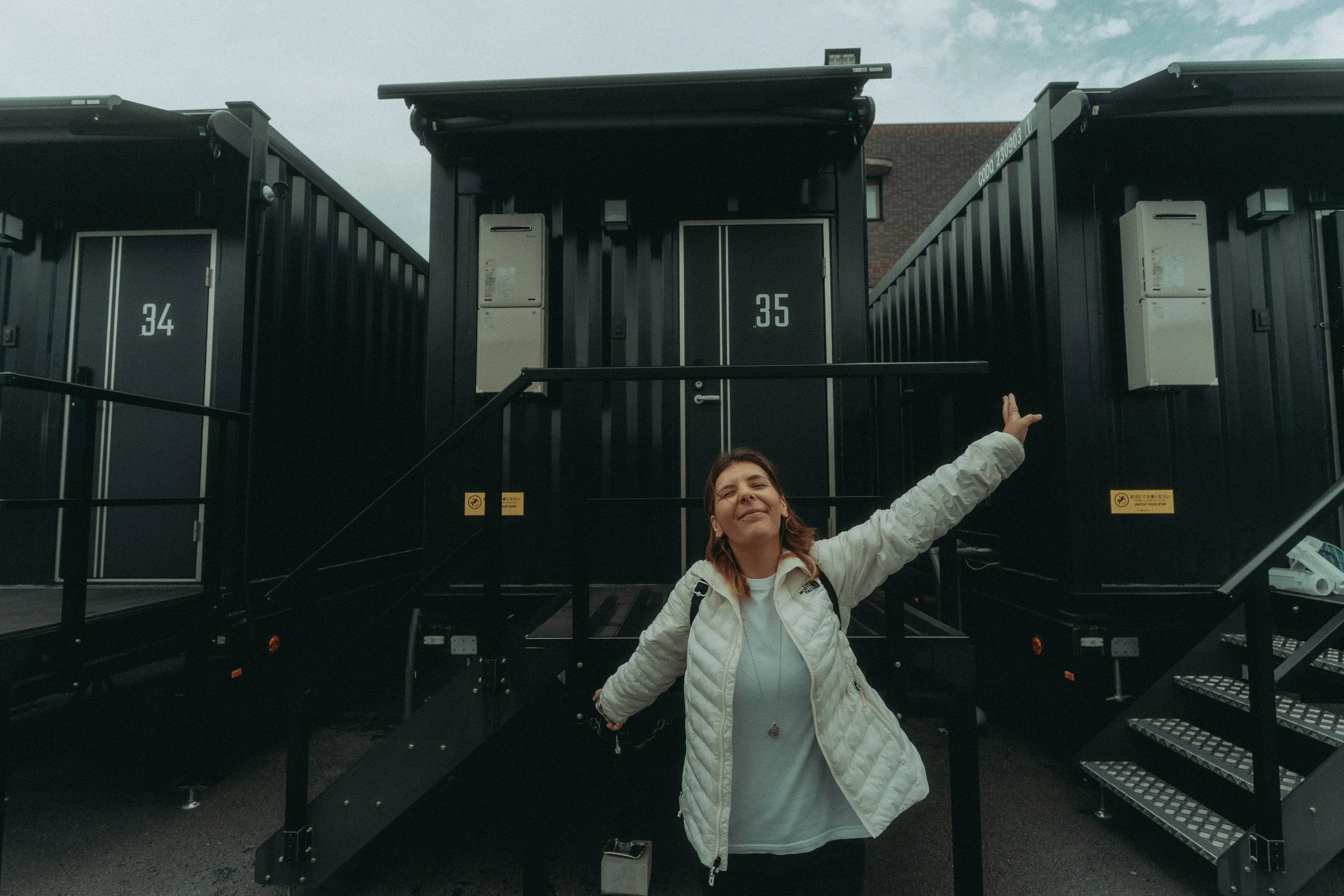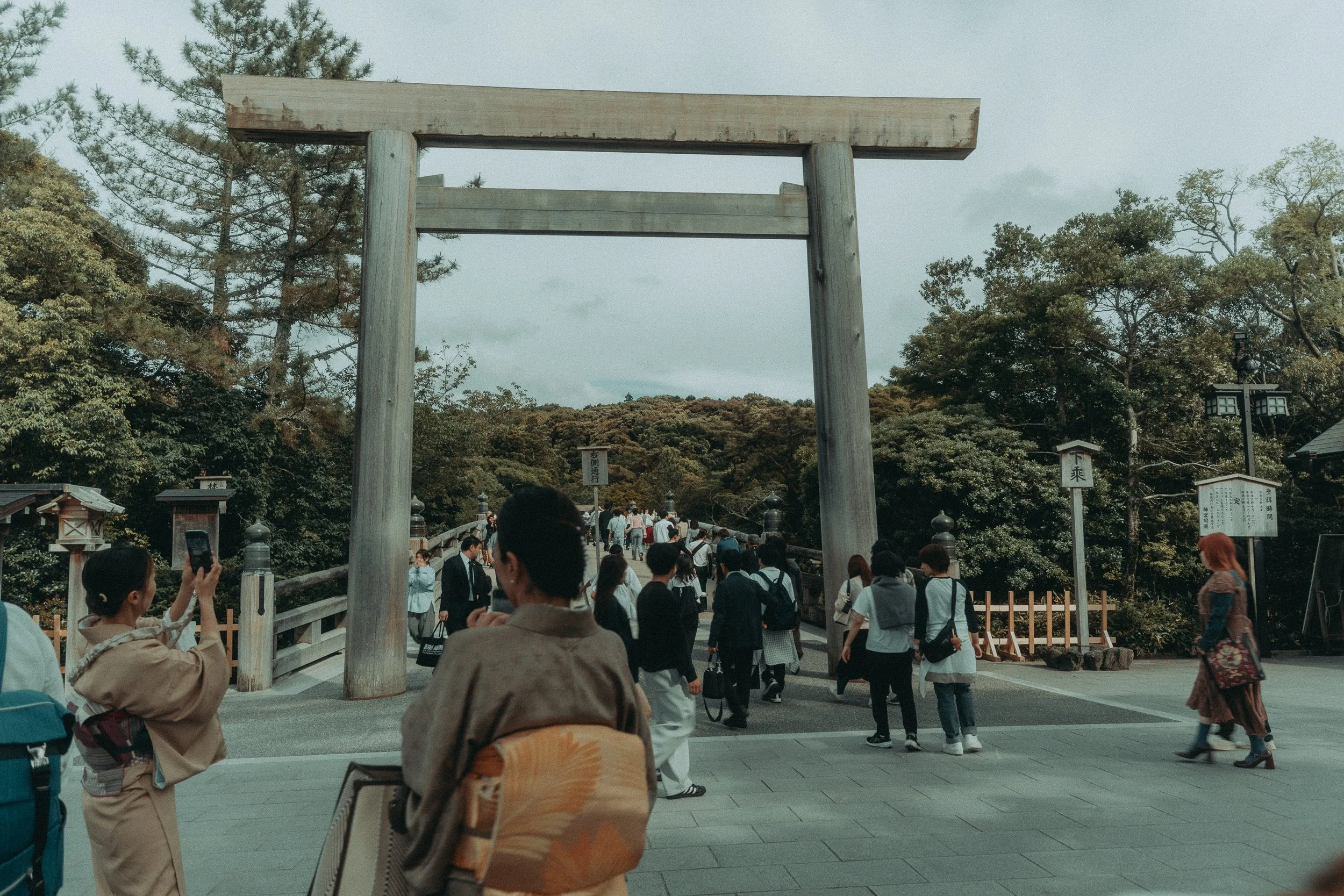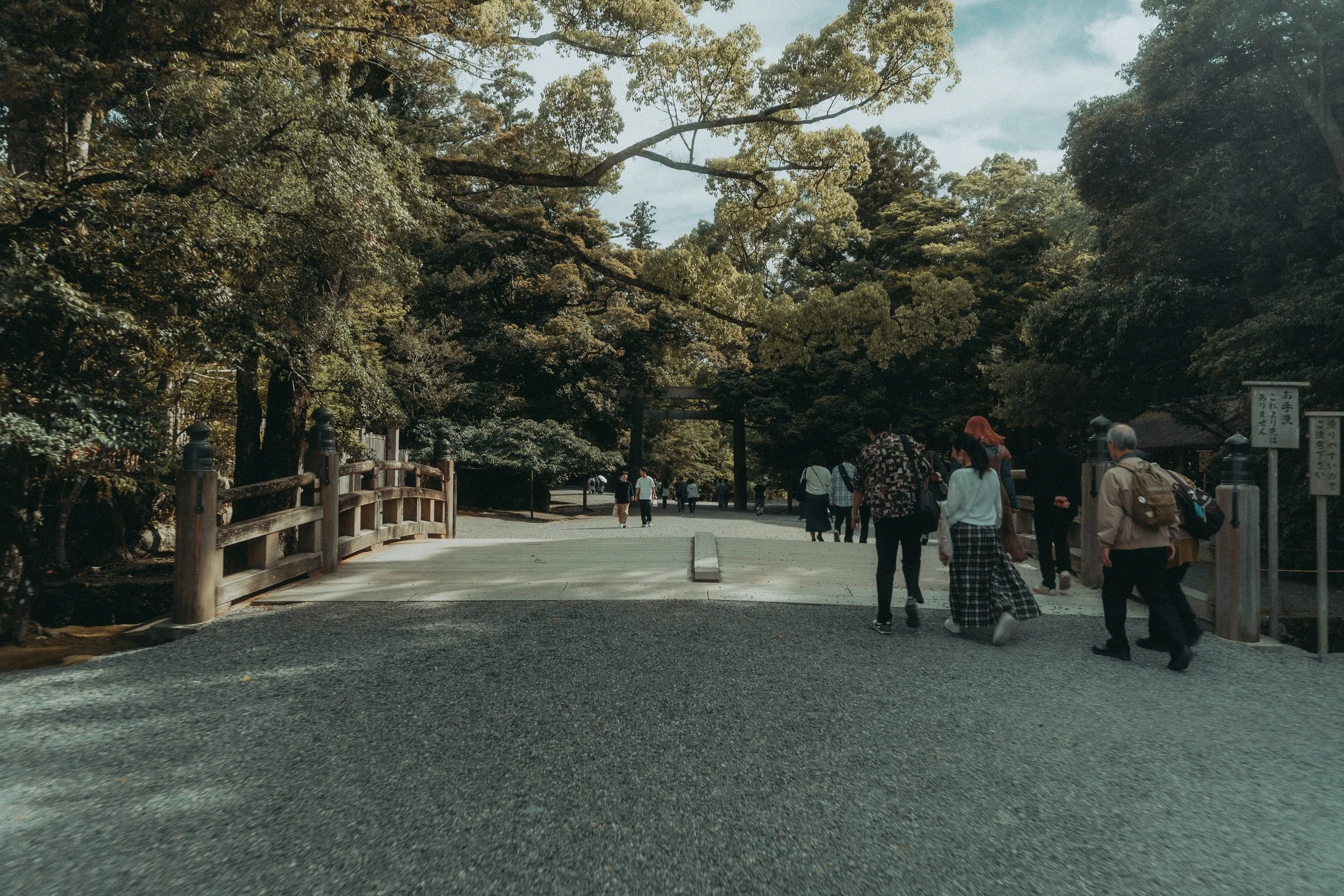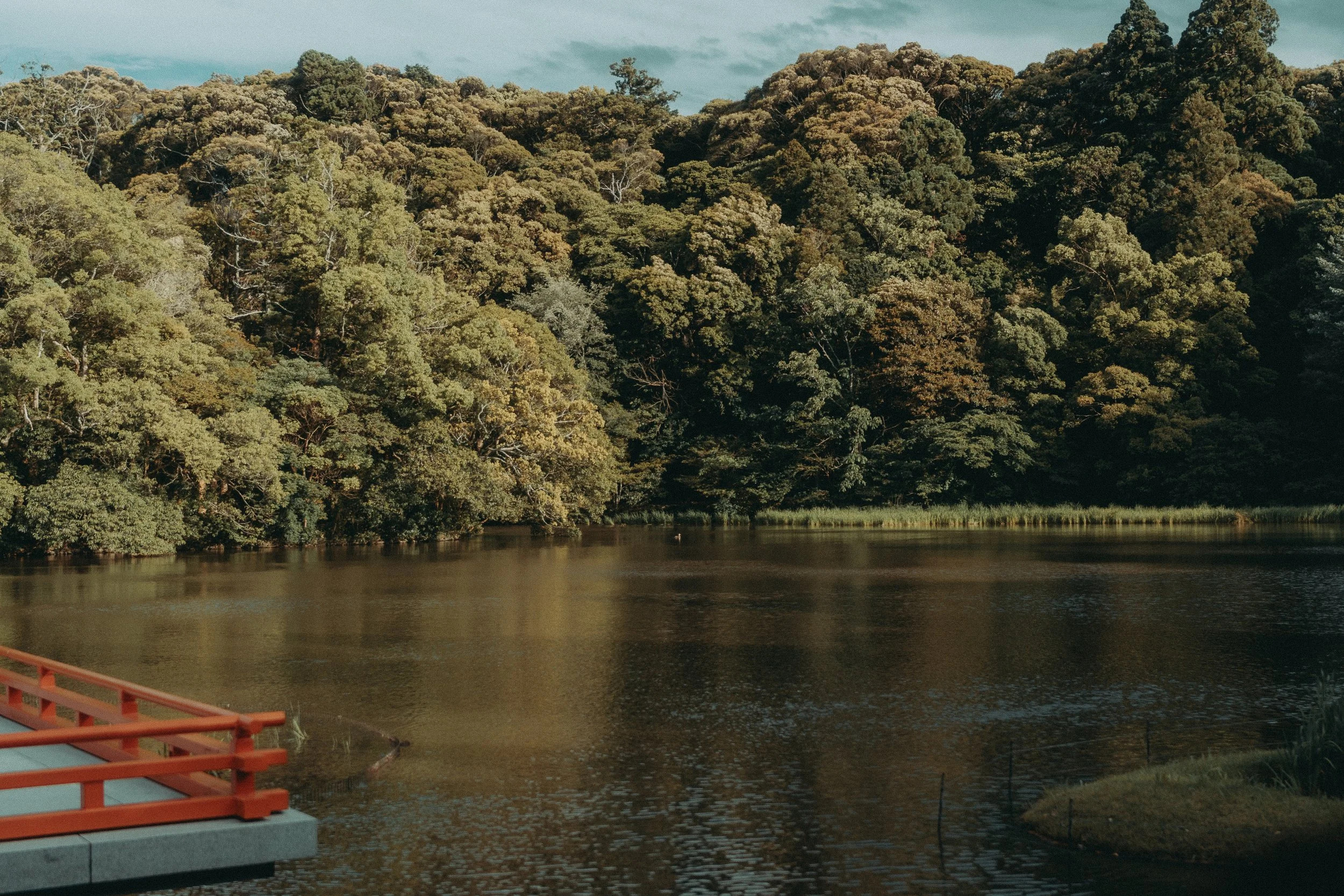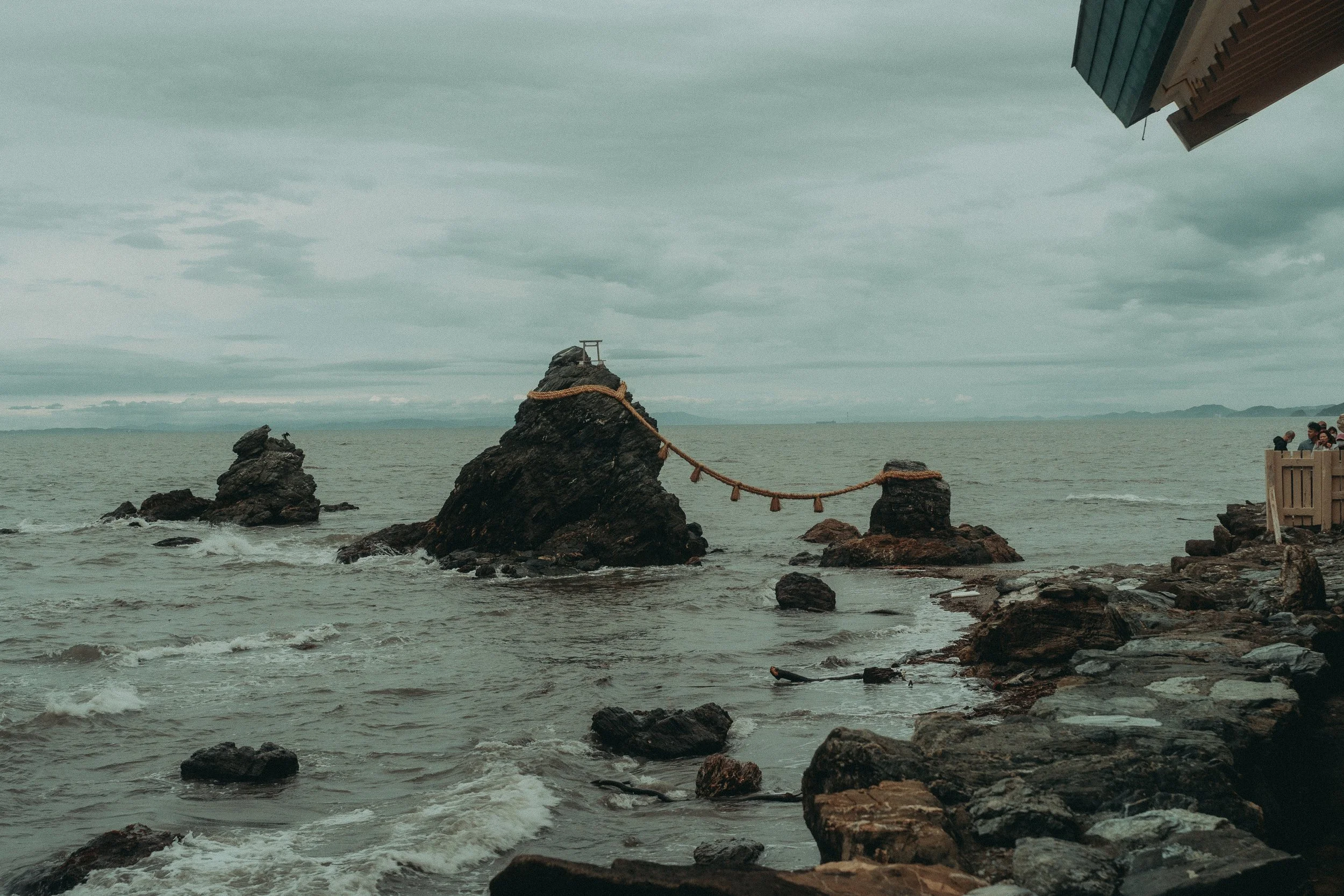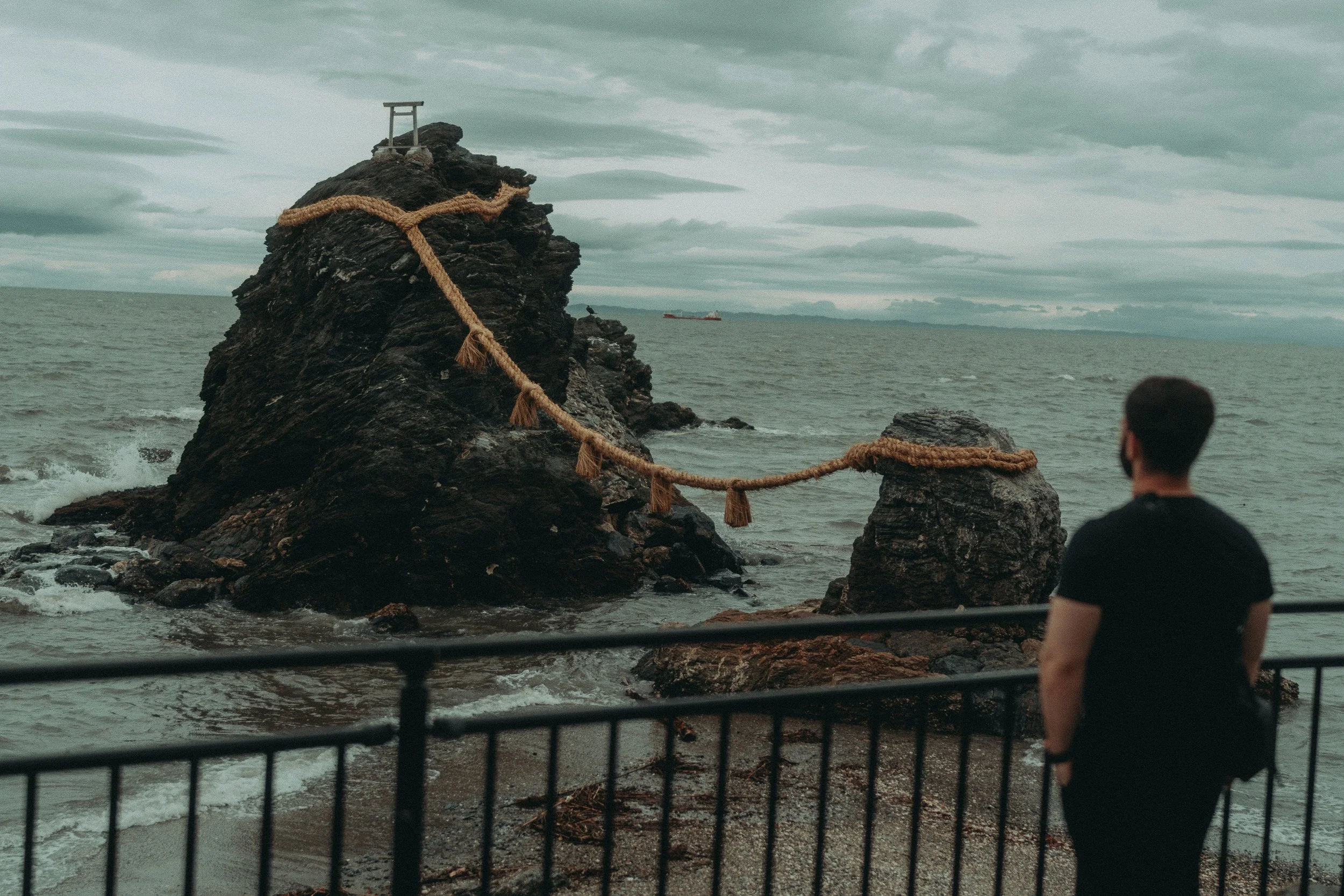Kansai Region: Beyond Osaka, Kyoto and Nara
Kansai is one of the most iconic regions of Japan, home to powerhouse cities like Osaka, Kyoto, and Nara. These places deserve their fame, no doubt. But here’s the thing: Kansai is so much more than the usual suspects. Beyond the temples and neon lights, there’s a whole side of the region that rarely makes it to Instagram feeds or travel itineraries.
As part of our one-year adventure across Japan, we set out to uncover these overlooked gems. We were looking for quiet fishing villages, sleepy train stations, forgotten mountain shrines, and unexpected local encounters.
This blog is your Kansai guide off the beaten track. Whether you're a return visitor or just craving something a little different, these are the places that made us feel like we were discovering Japan all over again.
So buckle up, and let’s dive into some of the lesser-known (but absolutely worth it) spots in Kansai that stole our hearts.
JUMP TO A CATEGORY
Transportation in Kansai
Japan’s transportation system is a marvel of punctuality and precision, and Kansai is no exception. There’s always a convenient and often scenic way to get there.
Airports
Kansai International Airport (KIX): Great access to Osaka, Kyoto, and beyond.
Osaka Itami Airport (ITM): Smaller, domestic-focused airport that’s actually closer to the city than KIX.
Kobe Airport (UKB): Another domestic option with flights to Tokyo, Sapporo, and Okinawa. Bonus: it’s connected to Kobe’s city center by a quick train ride.
Train Passes: What’s the Best Option?
1. JR Kansai Area Pass
Perfect if you plan to hop between major cities like Kyoto, Osaka, Nara, Himeji, and Kobe.
Type: Prepaid IC card (like Suica or Pasmo, but for Kansai).
Coverage: Works on trains, subways, buses, and even vending machines. Includes discounts at 200+ attractions.
3. ICOCA Card
Another IC card (like Kansai One Pass, but without the tourism discounts).
Pro Tip: If your itinerary includes a lot of JR intercity travel, go with the JR Kansai Pass. If you're planning lots of small hops, buses, and private railways (like the Kintetsu or Hankyu lines), the Kansai One Pass will save your wallet.
Car Rental
Especially for Wakayama and for Kushimoto, we decided to rent a car, and it was the best decision we made! It allows you to explore everything thouroughly, like the Nachi falls and much more, with less stress! We can recommend booking directly here or alternatively here.
Stay Connected: Pocket Wi-Fi is Your Best Friend
Since we were staying for a long time in Japan, reliable internet was non-negotiable. We rented our Pocket Wi-Fi from Japan Wireless, which offers flexible plans for short and long stays. They even deliver it to your hotel or the airport—so convenient that even Sara didn’t need a Plan B (and that’s saying something).
Returning it is as simple as dropping the prepaid envelope into a mailbox at the airport (before security!) on your last day. Easy peasy, even for Vasco, who usually leaves logistical matters to Sara.
Gear Recommendations for Photography in Kansai
These recommendations are based on the gear we used to capture everything. Our Sony A6700 (cropped sensor) paired with the Sigma 10-18mm f2.8 for wide shots and vlogs, the 35mm f1.4 for portraits and street photography, the 70-200mm f2.8 for wildlife and zoom shots, and the 16mm f1.4 for night and astro photography. We used a Marumi Black Mist 1/4 filter ( this is an equivalent) for a cinematic look and the Freewell M2 kit for ND and UV filtering. Our DJI 4K Pro Mini is also a great way to get aerial shots where you have permission to fly (check our Drone flying in Japan blog post here).
Best Places to Visit in Kansai
A part from the usual cities like Osaka (see our guide here), Kyoto (see our guide here) and Nara (see our guide here), Kansai has much more to see!
These are some of our favorites and that we definitely would recommend you pay a visit to!
Here are our Kansai Itineraries by city!
Himeji - The Samurai City (3-Day Itinerary)
Just an hour or so from Osaka or Kobe by train, Himeji is a must-see for history and castle enthusiasts. We stayed at the APA Hotel Himeji Ekikita, which was pretty central and close to the station, but very basic, as all APA’s tend to be.
Day 1: The Iconic Castle and Its Surroundings
Himeji Castle
This is an UNESCO World Heritage site, known as the "White Heron Castle." It is probably one of the most famous castles in Japan and it survived pretty much everything you can think of!
Admission: 1,000yen (Combo with Koko-en: 1,050 yen)
Vasco’s Photography Tip: I suggest the Sigma 10-18mm for wide establishing shots, especially walking around the moat.
Koko-en Garden
This is a traditional Japanese garden next to Himeji Castle. With koi ponds, tea houses, and a lot of greenery, it’s like stepping into a postcard.
Admission: 310yen (We recommend the combo with castle)
Vasco’s Photography Tip: I used the 35mm f1.4 here to compress garden layers and focus on fine details.
Food Stop Suggestions
こめきち (Komekichi Onigiri Shop)
A tiny but amazing onigiri stand close to Himeji Station. Fluffy rice, perfect seasoning, and a huge variety of fillings, salmon, plum, konbu, spicy miso, you name it!
Rice Flour Taiyaki Stand (米粉のたい焼き)
They sell crispy-on-the-outside, chewy-on-the-inside taiyakis made from rice flour, gluten-free and extra textured. Fillings include sweet red bean, custard, pistachio and strawberry and seasonal flavors like purple sweet potato.
Yakiniku Azumi (焼肉あづみ)
This one’s for meat lovers. Tucked away from the tourist crowds, it’s a locals’ favorite for premium cuts of beef grilled at your table.
Vasco’s tip: Go for the kalbi and the tongue, super delicious!
Day 2: Temples and Panoramas
Zuiganji Nenbutsudo
A more hidden, quiet temple! No crowds and just a peaceful vibe. One of those “breathe in” places.
Hiromine Shrine
Perched on a hill, this shrine offers panoramic views of the city. Pro tip: visit during sunset for an Instagram-worthy shot.
Mt. Shosha (Engyo-ji Temple)
Take the ropeway up to this mountain temple complex. It’s a bit of a hike, but it gives you great views.
Admission: 600yen round-trip ropeway
Food Stop Suggestions
Café de Muche
A charming retro café close to the castle. Known for its frothy matcha latte and quiet, vintage mood.
Sara’s tip: They have various seasonal cakes that you can pair perfectly with the bitter matcha.
Jokamachi Guild
They serve hearty Japanese-style curry rice, seasonal drinks, and desserts in a cozy, creative setting.
The Himeji white curry is served here, so you can try it out!
Day 3: A Quirky Stop
Yokai Village Day Trip – Fukusaki
We’re working on a full blog post for this magical, folklore-filled day trip! Expect maybe a yokai or two wandering the streets. (Check all the details here, and also the video about the itinerary below!)
Kobe – Modern Charm and Seaside Scenes (4 day itinerary)
Kobe is often skipped by first-time visitors, and it’s a shame. It’s stylish and packed with views, flavors, and stories. From herb gardens to quirky streets and delicious food, it’s a city that sneaks up on you.
This was Vasco’s favorite “unexpected gem” of the trip, not just for its food (Kobe beef, duh), but also for the gorgeous panoramic views and the mix of modern and Meiji-era charm.
We stayed at the BRENZA HOTEL, which was central, budget-friendly, and had just the right amount of comfort to keep us going after a day of exploring (and eating).
So, whether you’re here for the beef, the views, or a bit of everything, here’s our suggestions to help you make the most of your Kobe adventure!
Day 1 – Gardens, Shrines & Hidden Corners
Sorakuen Garden
A quiet, elegant garden tucked in the heart of Kobe. Think small bridges, koi ponds, and a beautiful traditional house you can actually enter.
Pro Tip: Visit in spring or autumn for the most vibrant scenery.
Admission: ¥300 adult, ¥150 child
Vasco’s Photography Tip: Shot this one with the 35mm f1.4
Ikuta Jinja Shrine
One of the oldest shrines in Japan, right in the city center. Walk under the bright red torii, and if you’re lucky, catch a wedding happening inside. The shrine is dedicated to the god of matchmaking, so it’s a good date spot.
Vasco’s Photography Tip: Used the 10-18mm to exaggerate the towering torii gates. Bright midday sun? ND filters from the Freewell kit helped hold contrast.
Food Stop Suggestions
Isuzu Bakery
Established bakery famous for its soft, flavorful curry pan.
If you have not tried curry pan yet, do it here, trust us.
Tor Road Steak Aoyama
Premium Kobe beef grilled to perfection right before you. If you are looking for a special experience, this is for you, just keep in mind it can get pricy.
Day 2 – Sake Breweries & Mountaintop Gardens
Hakutsuru Sake Brewery Museum
Old sake cellars turned museum, free entry and a sake tasting at the end. What’s not to love? This museum offers a deep dive into the brewing process with interactive exhibits. Hakutsuru is one of Japan’s most famous sake brands, and you can buy exclusive bottles here.
Nunobiki Ropeway + Herb Garden
Take the ropeway from Shin-Kobe Station for an epic view of the city. At the top? A European-style herb garden, café, and more panoramic scenes.
Stop at the café halfway down. They had purple sweet potato ice cream and a bunch of desserts, like a mochi cheesecake!
Ride cost: Approx. ¥1,500 round-trip
Vasco’s Photography Tip: From the gondola, we used the 10-18mm lens and pressed it to the glass for a reflection-free frame.
Food Stop Suggestions
Kobe Beef Steak Noble Urs (Sannomiya)
A good place to try Kobe beef hamburger, especially at lunch and the set meal is a good price taking into account it’s Kobe beef.
Day 3 – Harbor Views & Chinatown
Meriken Park + Port Tower
Modern, artsy harbor zone with sculptures, an architectural museum, and a great sunset spot.
Must-See Here: The Earthquake Memorial in the park, which preserves a section of the damaged waterfront. This museum is both humbling and inspiring, offering a detailed look at the devastating 1995 earthquake and Kobe’s incredible recovery. The interactive displays and survivor stories make it a must-visit.
Admission to tower: Approx. ¥700
Vasco’s Photography Tip: For twilight shots, we switched to the 16mm f1.4 to isolate the Port Tower against the skyline. The magic is in the color grading you’ll get from the natural reds and purples.
Kitano Ijinkan-Gai
Meiji-era Western houses, colorful, quirky, and photogenic. Each house has a unique theme, like the “Weathercock House” or the “Uroko House.” It’s like a mini-Europe in the heart of Japan.
Admission: Many Western houses have small entry fees (¥200–¥500 each)
Chinatown & Harborland
Street food heaven. Chinatown (one of the few that exist in Japan) is packed with street food vendors, restaurants, and souvenir shops. You can easily eat your weight in pork buns and dumplings here, with zero regrets. The Kobe Harborland is a vibrant shopping and entertainment district by the waterfront. From malls to Ferris wheels, it’s got something for everyone. The night views of the illuminated port are stunning!
Vasco’s Photography Tip: This is when you shoot handheld at night. Freewell ND off, lens wide open.
Food Stop Suggestions
Maccha House Kobe Harborland umie (マッチャハウス 神戸ハーバーランドumie)
Green-tea aficionados, rejoice: matcha parfaits, lattes, and matcha tiramisu, Sara’s personal heaven. The matcha here is super delicious!
Day 4 – Shrines, Shopping & Soaks
Sannomiya Center Gai Shopping Street
A long, covered shopping arcade filled with indie boutiques, quirky accessory shops, vintage record stores, and cute cafés. It’s an ideal spot to people-watch, snack, or do some gift shopping without worrying about weather.
Vasco’s Photography Tip: This is where the 35mm shines.
Kobe Municipal Arboretum
If you're craving greenery, this arboretum is a peaceful retreat. Thousands of plant species, lakeside views, forest trails, it’s beautiful year-round, especially during cherry blossom and koyo (autumn leaves) seasons.
Admission: Approx. ¥450–¥600
Kobe City Museum
You can explore Kobe’s evolution as an international port city: archaeological artifacts, Nanban art, Yayoi bronze bells, interactive displays, and a rotating collection.
Admission: Ground floor history room, FREE; 2F collection room, ¥300 for adults, ¥150 for university students, free for high school and younger
Vasco’s Photography Tip: I used the 16mm f1.4 for wide interior shots and detailed shots.
Átoa (Art & Aquarium)
This isn’t your typical aquarium. Átoa blends marine life with art and lighting installations. It’s super immersive and the top floor has a super cute café and amazing views!
Admission: Approx. ¥1,500:; Also make sure you ask for the stamp booklet here at the reception, which costs 500 yen!
Vasco’s Photography Tip: A low-light challenge worth taking. Used the Sigma 16mm f1.4 for wide indoor compositions. Keep ISO manageable and embrace the glow.
Food Stop Suggestions
Tooth Mart Food Hall
Kobe’s top food hall with nine unique vendors. Kobe beef, craft beer, sweets, BBQ, and panoramic harbor views. Super worth it.
Price Range: ¥1,000–¥5,000 (depending if you go for the beef)
Wakayama - Spiritual Trails & Coastal Calmness (3-Day Itinerary)
Wakayama is another hidden gem of Kansai, a place where sacred meets scenic, and Vasco meets seafood markets. Located just a train ride away from Osaka (1h45), Kyoto (2h30), and Nara (2h30), it’s an easy escape from the bustling cities.
We stayed at the Daiwa Roynet Hotel Wakayama, which checked all our boxes: budget-friendly, comfy, and close to the action. Vasco especially appreciated the proximity to food (priorities, right?).
If you’re ready for serene shrines, gorgeous gardens, and some of the freshest seafood in Japan, let’s dive into all that Wakayama has to offer!
Day 1 – Castles, Gardens & Temple Steps
Wakayama Castle
Perched on a hill in the heart of the city, Wakayama Castle offers amazing views and a slice of samurai history. Vasco was more interested in the snack stalls nearby, but even he couldn’t resist the panoramic views.
Admission: ¥410 adults, ¥200 children
Vasco’s Photography Tip: Use the 70-200mm lens for compressing rooftop layers; switch to the 10-18mm indoors for textured details.
Momijidani Teien Garden
Traditional garden near Wakayama Castle with peaceful walking paths and seasonal colors.
Admission: Free
Vasco’s Photography Tip: Use a wide aperture here!
Kimii-dera Temple
Sara immediately fell in love with this temple, famous for its 1,200 cherry trees that burst into bloom every spring. Kimii-dera is perched on a hillside, so you’ll get a workout climbing the 231 steps to the main hall. Consider it your pilgrimage warm-up.
Pro Tip: Bring water, 231 steps are no joke!
Admission: Free
Vasco’s Photography Tip: Frame the stairway with my Sigma 10–18mm and look for contrasty shadows.
Food Stop Suggestions
Sarashina Honten
This historic soba restaurant has been dishing up noodles for over 150 years.
Pro Tip: Arrive early, this place fills fast with locals and tourists alike.
Day 2 – Ornate Shrines & Quiet Gardens
Kishu Toshogu Shrine
Known as the “Nikko of Kansai,” this shrine is dedicated to Tokugawa Ieyasu, the founder of the Tokugawa shogunate. Sara loved the intricate carvings and bright colors, while Vasco was busy counting how many stairs we had to climb.
Admission: ¥300
Vasco’s Photography Tip: Early morning sun lights up the red and gold architecture beautifully, use the 35mm f1.4 for best results.
Wakaura Tenman-gu Shrine
Dedicated to the deity of learning, with great views from its hilltop location.
Admission: Free
Yosuien Garden
This lesser-known garden is a hidden gem. With its elegant landscaping and serene vibes, it’s a great spot to escape the crowds. Vasco took about 50 photos of the same koi fish because, apparently, “it had personality.”
Admission: ¥350
Vasco’s Photography Tip: Try the 16mm with a Mist Filter filter for dreamy water reflections.
Awashima Shrine
This quirky shrine is dedicated to women and dolls. Yes, dolls. Thousands of them are left here as offerings, creating an atmosphere that’s equal parts fascinating and slightly eerie. Sara found it charming; Vasco was convinced a doll winked at him.
Admission: Free
Vasco’s Photography Tip: Highlight the unique facial features of the dolls.
Food Stop Suggestions
Ide Shoten (井出商店)
A Wakayama ramen place specializing in rich tonkotsu-shoyu broth, firm noodles, and tender chashu.
Menu Highlight: Don’t miss the “hayasushi” (pressed mackerel sushi) on the side.
Day 3 – Markets & Coastal Flavors
Kuroshio Market
Seafood lovers, rejoice! This market is a paradise for fresh fish, sushi, and Vasco’s new favorite: tuna-cutting shows. Watching a massive tuna being sliced up with samurai-level precision is oddly mesmerizing, and you get to eat it afterward!
Must-Try: The sushi platters are as fresh as they come.
Admission: Free
Vasco’s Photography Tip: 16mm at f/1.4 to capture stall action. Freeze the motion at the tuna stage with a faster shutter.
Food Stop Suggestions
Sushi Gishin
One of Wakayama’s rare high-end sushi bars, alternatively to the market you can experience something special at this place
Style: Omakase-focused, premium cuts, chef’s seasonal selections.
Kushimoto – Rock Formations, Waterfalls & Seafood Dreams (3-Day Itinerary)
Kushimoto is known for its jaw-dropping coastal rock formations and amazing seaside views. The train ride alone, about 2h40 from Wakayama city, is worth the trip, with the sea keeping you company the entire way. We rented a car in Kushimoto itself and it was the best choice we have ever made, especially because the weather in Japan is always a bit iffy, so a car helps you get everywhere safely even if it rains. We used Toyota Rent a Car directly and it was super simple and efficient as always!
We stayed at the Mercure Wakayama Kushimoto Resort & Spa, which offered seaside views, comfy beds, and a spa that Sara declared “absolutely necessary” after all the walking. Plus, it’s close to the station and the rent-a-car, so you can maximize your time exploring (and eating).
Day 1 – Seaside Shrines & Coastal Wonders
Asaki Shrine
This small shrine right by the sea offers serene vibes and stunning ocean views. Sara was enchanted by the torii gate perfectly framing the horizon, while Vasco took 47 photos trying to capture it “just right.”
Admission: Free
Vasco’s Photography Tip: Sunrise or sunset is prime time for shooting here with the Sigma 10-18mm or 16mm f1.4 wide-angle lens, capturing that perfect ocean-light combo. Also drones are mostly allowed in the Kushimoto area.
Kushimoto Town
Charming seaside harbor with local shops and cafes to explore.
Vasco’s Photography Tip: The 16mm f/1.4 lens is perfect for cozy cafe interiors and street photography here.
Hashiguiiwa Rocks
These iconic rock formations look like a line of giant stepping stones leading into the sea. Legend has it that they were created by a monk who failed to build a bridge to the nearby island.
Pro Tip: Visit during low tide for the best views and photo opportunities.
Admission: Free
Vasco’s Photography Tip: Visit during low tide for the best shots with clear rock exposures. Use the 70-200mm for tight, dramatic detail or the 16mm for vast seascapes.
Food Stop Suggestions
Restaurant Kukai
A cozy spot serving up some of the freshest seafood you’ll ever taste. Try the sashimi here, since it is super fresh and delicious!
Pro Tip: Call ahead to reserve a table, as it’s a popular spot with locals. Or use the App Tabelog to book there!
Day 2 – Waterfalls & Sacred Shrines
Nachi Waterfall (day trip from Kushimoto)
A short trip from Kushimoto (especially by car), Nachi Waterfall is one of Japan’s tallest and most iconic waterfalls. It’s part of the sacred Kumano Nachi Taisha shrine complex, blending natural beauty with spiritual significance. Sara was in awe of the cascading water.
Good to Know: Wear comfy shoes,the path to the waterfall involves a bit of walking. If you have a car, you have plenty of car parks around so make sure you add them to your Maps prior (make sure you have cash though to pay for them)!
Admission: Free, 300 yen for the viewing platform only
Vasco’s Photography Tip: Use the 16mm with a Mist Filter filter to create silky water effects; tripod recommended.
Kumano Hayatama Taisha
One of the three grand shrines of Kumano, this sacred site is steeped in history and mysticism.
Admission: Free
Vasco’s Photography Tip: Capture the red torii gates with the 35mm lens in early morning light.
Food Stop Suggestions
SABAKI
This traditional izakaya offers a mix of local specialties and classic Japanese comfort food.
Kaisendon Tairyo
Fresh seafood bowls packed with locally caught fish and seafood, which is Kushimoto’s strenght.
Day 3 – Marine Life & Dramatic Coastlines
Kushimoto Marine Park
This marine park offers glass-bottom boat rides and an underwater observatory where you can get up close with the local marine life. Sara absolutely loved the sea turtles! You can even hold the babies! They are protected species so you can also donate money to help further protect and save them.
Admission: ¥1200 adults, ¥600 children
Vasco’s Photography Tip: 70-200mm zoom captures underwater fish details. Use a polarizing filter to reduce water glare.
Kai Kongo (Umikongo)
Rugged cliffs and crashing waves at the “Gate of the Sea” create dramatic photo opportunities and moments of reflection.
Admission: Free
Vasco’s Photography Tip: Use the 10-18mm wide lens for sweeping coastal panoramas, best at golden hour.
Food Stop Suggestions
Umi no Iro
Cozy seaside cafe serving grilled fish and tempura!
Sushi Tatsu
Traditional sushi spot loved for its intimate atmosphere and fresh cuts.
Cafe Hinagiku
Perfect for a coffee break with a sea view and homemade sweets.
Matsusaka & Ise – Beef Dreams and Sacred Shrines (3-Day Itinerary)
Matsusaka is a peaceful place in Mie Province that served as our base for exploring Ise. While it’s not as flashy as some tourist hotspots, its calm vibe and hidden treasures make it a worthwhile stop. Plus, it’s the birthplace of Matsusaka beef, so you know Vasco was in heaven.
Conveniently located about an hour from Ise and 1.5 hours from Nagoya, Matsusaka is perfect for those who want to escape the crowds and explore at a slower pace.
Ise is the crown jewel of Mie Province and a must-visit for anyone exploring Japan’s spiritual and cultural heritage. Yes, it’s a 4-hour trip from Kushimoto, but trust us, it’s worth every minute.
We stayed at HOTEL R9 The Yard 松阪, and Vasco couldn’t stop raving about the container-style rooms. It is for sure a different and fun experience.
Day 1 – Exploring Matsusaka’s Samurai Legacy & Bamboo Walk
Matsusaka Castlesite Park
This historic site is all that remains of Matsusaka Castle, but don’t let the lack of a full castle deter you. The stone walls, surrounded by nature, make for a serene stroll and a glimpse into the city’s samurai past.
Admission: Free
Vasco’s Photography Tip: Use the Sigma 10-18mm f/2.8 for wide context shots of the stone walls.
Gojoban Yashiki (Samurai Residence)
This samurai residence is one of the best-preserved in Japan, giving you a peek into how the samurai lived back in the day. It is super interesting to get to know more about the history and to step back in time.
Admission ¥300
Vasco’s Photography Tip: The 35mm f/1.4 shines here.
Matsusaka Shrine
Small, tranquil shrine offering a peaceful retreat in the afternoon.
Vasco’s Photography Tip: Late afternoon gives the best soft light. Frame torii gates with the 10-18mm f/2.8, or switch to the 16mm f/1.4 if you're chasing low light.
Minoda Bamboo Forest Road
Move over, Arashiyama! This quiet bamboo forest is perfect for those who want a peaceful stroll without the crowds. It is a little bit in the middle of nowhere, so if you can rent a car in Matsusaka, do it!
Pro Tip: Wear comfy shoes, the path is slightly uneven in some places.
Vasco’s Photography Tip: The Sigma 10-18mm gives you that immersive “bamboo tunnel” effect. Try some low-angle shots!
Food Stop Suggestions
Wadakin Sukiyaki
If you’re in Matsusaka, trying the legendary Matsusaka beef is non-negotiable,and Wadakin is the ultimate place to do it. This historic restaurant has been serving its melt-in-your-mouth sukiyaki since the Meiji era, and it shows in every expertly marbled slice.
Pro Tip:
Reservations are highly recommended. Use Tabelog to reserve a seat online without needing to make a phone call.
Day 2 – Matsusaka’s Nature & Family Fun + Shrine Visits
Matsusaka Agricultural Park Bell Farm
A family-friendly spot with something for everyone, fresh produce, flower fields, and even a hands-on butter-making workshop.
Admission 500 yen
Vasco’s Photography Tip: The 35mm f/1.4 is your friend here.
Kasamatsu Kawazu Sakura Road (seasonal)
If you’re visiting in late winter or early spring, this road lined with Kawazu cherry blossoms is a must-see. So make sure you add it to your itinerary if that is the case!
Day 3 – Day Trip to Ise: Spiritual Heart of Japan
Kotai Jingu (Ise Jingu Naiku, Inner Sanctuary)
This is the big one, and the reason we came to Ise, one of the most sacred Shinto shrines in Japan, dedicated to Amaterasu, the sun goddess.
Pro Tip: The shrine is rebuilt every 20 years as part of Shinto tradition, so you’re witnessing a living piece of history.
Vasco’s Photography Tip: The 10-18mm is a good option here.
Okage Yokocho
Step back in time at this Edo-period-style shopping street, where you’ll find traditional crafts, snacks, and souvenirs. We tried everything from matcha ice cream to freshly grilled mochi here.
Must-Try: Akafuku mochi, a sweet rice cake treat that’s been a local favorite for over 300 years.
Vasco’s Photography Tip: The 35mm f/1.4 is perfect for capturing street life, mochi grilling, and expressive vendor portraits.
Sarutahiko Jinja & Kagura Hall
This charming shrine is dedicated to Sarutahiko, the deity of guidance and strength.
Don’t Miss: The smaller but equally lovely Kagura Hall nearby, where you can sometimes catch traditional performances.
Vasco’s Photography Tip: Use the 70-200mm for the shots from afar, and shrine detail compressions. The 35mm f/1.4 is ideal for symmetry shots at the torii gates or low-contrast moments in soft light.
Toyouke Daijingu (Ise Jingu Geku, Outer Sanctuary)
Dedicated to the deity of food, clothing, and shelter, this shrine is a quieter counterpart to the Inner Sanctuary. Vasco was deeply moved by the idea of a shrine dedicated to food.
Vasco’s Photography Tip: The 16mm f/1.4 excels in shade and shrine courtyards.
Futamiokitama Shrine & Meoto Iwa (Wedded Rocks)
Known for its iconic “Meoto Iwa” (Wedded Rocks), this seaside shrine is a symbol of marital harmony.
Pro Tip: Visit during sunrise or sunset for a truly magical view of the sun rising between the rocks.
Vasco’s Photography Tip: On the ground, the 70-200mm f/2.8 is unbeatable for catching the sun framed between the rocks.
Food Stop Suggestions
Udon-ya Fukusuke (Okage Yokocho)
This legendary noodle shop tucked inside Okage Yokocho serves up thick, chewy udon in a deep, soul-warming broth. The interior is old-school and cozy, and the vibe matches the nostalgic energy of the street.
Pro Tip:
Get the tempura topping,light, crispy, and perfectly golden. It’s the kind of bite that makes you consider moving to Japan full-time.
Maruru Cafe
One word: sweet potato with soft ice cream. Okay, maybe a few more, Maruru is a cozy, Instagrammable cafe that specializes in Japanese-style sweets and seasonal flavors.
Wrapping Up Our Kansai Adventure
From the sacred shrines of Ise to the coastal beauty of Kushimoto, the peaceful charm of Matsusaka, and beyond, Kansai has shown us a side of Japan that goes far beyond the tourist trail. Whether you’re chasing waterfalls, indulging in world-class beef, or walking through bamboo forests, this region offers something for every kind of traveler.
We hope this guide inspires you to explore the lesser-known gems of Kansai and experience the rich culture, history, and natural beauty that make this region so unforgettable.
Don’t forget to follow Waddle Wanders on all our socials for even more travel inspiration, stunning photography (courtesy of Vasco’s lens), and behind-the-scenes YouTube videos of our adventures. Let’s keep waddling through the world together! 🦆








